We live in a universe consisting of combinations of molecules. Some, such as methane or hydrogen, are smaller and simpler. Others, like the so-called organic molecules, have exceedingly large and complex structures. Some are responsible for smell and taste. Some drift in the air, while still others give rise to our bodies or the magnificent beauty in the heavens and the depths of the seas.
In short, the atoms of the 109 different chemical elements combine in various forms to constitute everything around us. The special features of these creations allow very different material properties to emerge. Sometimes a single atom added to a molecule may turn it into a toxic substance. A single atom added or removed can turn an inedible molecule into a nourishing one, or a sharp and sour smell into the delightful fragrance of a rose. The same atoms, if bonded to one another in different arrangements, can change the molecule's color, or solidify a fluid substance. The universe is an arena where this matchless artistry, whose secrets scientists haven't yet totally unraveled, is displayed. The miracles created by Allah in an infinitesimal, invisible world exhibit His infinite knowledge and sublime artistry.
In order to see this artistry up close, we need to examine the features that molecules possess, and how they have been specially created for life to exist.
 |
Every molecule in the universe is created with exceptionally delicate balances. Perhaps one of the most important molecules that Allah has created, whose superior characteristics are most essential for our lives, is the water molecule, specially brought into being to ensure the survival of all life on Earth. Let us have a closer look at the water molecule to better grasp this marvel of Allah’s superior creation.
The large amounts of water on the Earth are present in three different states: liquid, gas and solid. Of that, 97 percent is too salty, and 75 percent of the fresh water is solidified at the poles. The remaining 1 percent of the total water is drinkable, but most of that is inaccessibly deep groundwater. Thus, only 0.05 percent of the water running through lakes and streams is readily available. Yet even this small quantity is sufficient for living things on Earth to survive. 13
 |
We send forth the pollinating winds and send down water from the sky and give it to you to drink.And is it not you who keep its stores.(Surat al-Hijr: 22) The two seas are not the same: the one is sweet, refreshing, delicious drink, the other salty, bittrer to the taste.Yet from both of them you eat fresh flesh and extract ornaments for yourselves to wear: and you see ships on them, cleaving throungh the waves so that you can seek. His bounty and so that hopefully you will be thankful.(Surat Fatir: 12) |
Significantly, the salt water of all the seas and oceans that comprises 97% of the Earth's water actually serves human beings and other land-dwelling life. As a result of the accumulation in the clouds of water evaporated from the oceans, and that later descends to earth in the form of rain, that fresh water reaches the dry land. The seas and oceans covering more than 70% of the planet's surface are at the ideal levels for this evaporation. Were the amount of dry land any greater, then arid lands and deserts would increase enormously. Were it any less, then the areas remaining would become unproductive for agriculture due to the excessive rain that they would receive.
Allah has created the Earth's land-water ratio at the ideal level to support human life and gives us clean water that we could not acquire unless He so wished. This fact is revealed in a verse:
Have you thought about the water that you drink? Is it you who sent it down from the clouds or are We the Sender? (Surat al-Waqi‘a: 68-69)
Inside itself and around it, water shelters a great many living species. Even the smallest drop of water may contain hundreds of microorganisms. Water is also found inside living organism, and comprises between 50% and 95% of all the bodies of all living things.
The way that water is formed—by the coming together of two hydrogen atoms and one oxygen atom—is just as thought-provoking as its features and uses. It is actually rather difficult for these two atoms to come together in such a way as to form water. When you bring hydrogen and oxygen atoms together in a controlled environment like a test tube, you cannot see them suddenly combine into water molecules. You could not achieve such an outcome even if you waited for hundreds of years. Water would appear in the tube only after thousands of years, and then in only very small quantities. And that is still a remote possibility.
 |
It is Who sends down water from the sky.From it you drink and from it come the shrubs among which you graze your herds. (Surat an-Nahl: 10) |
So how can we obtain such a vital necessity for life? As you know, a high level of energy—therefore, a high temperature—is necessary for certain molecules to come into being or undergo changes. The same applies to water. In order for two molecules of hydrogen (H) and one of oxygen (O), to combine together and form water, they need to contact one another. During that process, the chemical bonds that form the hydrogen and oxygen molecules weaken, and the atoms link up in such a way as to create a new molecule: water. At present, the temperatures on Earth are too low to permit any possibility of new water formation. The water currently on Earth is at a level formed as a result of the high temperatures during the birth of the planet.14 That amount can never change. Under the effect of differing temperatures, water can be found in three different states. Solid-state water appears in the form of giant polar icecaps, where it seems to have been especially reserved. The water we use eventually evaporates and rises into the air in its gaseous state, and returns to Earth in a liquid form—rain. Thus the water you drink, use and absorb with the food you eat regularly returns to us in a more purified form. In short, by means of its specially imparted features, we can use the same water over and over again. At Allah's behest, water is constantly bestowed on us in a purified state:
. . . We send down from heaven pure water so that by it We can bring a dead land to life and give drink to many of the animals and people We created. (Surat al-Furqan: 48-49)
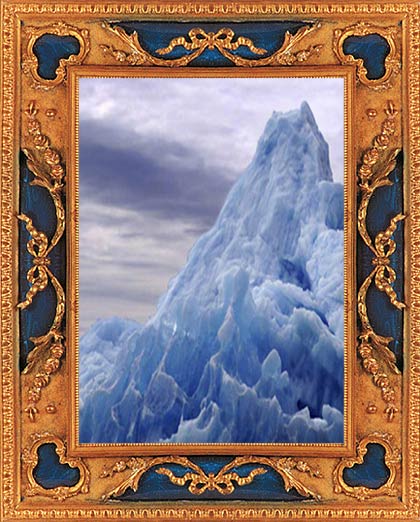 |
Does He Who created not then know? He is the All-Aware. It is He Who made the earth submissive to you, so walk its broad trails and eat what it provides. The Resurrection is to him.(Surat al-Mulk; 14-15) |
At room temperature, water is a familiar liquid. But this is most interesting, because under normal conditions, we would expect water to be in a gaseous state, like other small molecules such as ammonia and methane. Water's liquid nature stems from the small hydrogen atoms, and the hydrogen bonds between water molecules. As you know, covalent bonds hold a water molecule together, but one water molecule attaches to another via a hydrogen bond. As already stated, hydrogen bonds are exceedingly weak, and the duration of a hydrogen bond is approximately one hundred billionth of a second. However, the breaking of the bond does not destroy the assembly of water molecules, because when one bond is broken, another new one immediately forms. As a result of this constant renewal, water molecules cannot adhere to one another, but are viscous. As a final result, instead of forming a gas in which molecules move independently, water molecules group together as a moving liquid. This property of water, so different from that of similar molecules, is one of the basic necessities of life.
The weak hydrogen bonds between water molecules also results in the different densities of liquid water and ice. Almost all known substances are denser as a solid than in their liquid form in. For example, under normal conditions when you drop lumps of iron into molten iron, the solid lumps will sink to the bottom. Yet with water, this does not happen because ice, water's solid state, is less dense than liquid water. When water freezes, every molecule grips tightly onto its neighbor because of the hydrogen bonds, but the distance between these molecules remains quite large. Therefore, gaps remain between the bonds, and the structure of water in its solid form contains more empty space than its liquid counterpart, making it less dense.15 As a result, when you drop ice cubes into a glass of water, the ice inevitably rises to the surface—as do icebergs in the ocean.
This characteristic of water is of the greatest importance for life. Due to this effect of the hydrogen bonds, bodies of water always start to freeze from their surface down. In winter, ice forms on the upper layers of lakes and seas, and the mass of water beneath the ice remains in a liquid state.
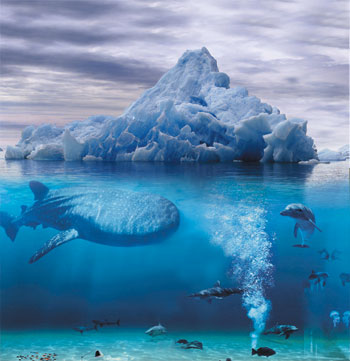 |
Under the effect of hydro gen bonds, bod ies of water always begin to freeze from the sur face. This means that all liv ing things under the ice have a shel ter in the win ter. Water in the lower lev els chills to no less than 4 degrees Celsius (39.2 degrees Fahrenheit). By means of this spe cial bal ance cre at ed by Allah, liv ing things in the water under neath can sur vive the win ter. |
As a result of this, thousands of water-dwelling organisms are able to survive. At the same time, the ice at the surface also acts as a protective layer that insulates the underlying water and keeps it from growing too cold. The mass of water below chills to no colder than 4oC (39oF), which temperature lets marine organisms survive. This is another special creation brought into being for living things. If ice were denser than water, lakes and oceans would begin to freeze from the bottom, and with no insulation, would freeze right up to the surface. A large part of Earth's northern seas would consist entirely of ice, and aquatic life would come to an end.
Water has other important properties. For example, when you gently place a very light shaving of metal on still water, you'll see that it remains on the surface, rather than sinking to the bottom. Also, certain insects are also able to walk across water without difficulty. Metal is heavier than water, as are many insects,16 so how can they remain on the surface in this way? The reason, once again, points to water's being deliberately created. The hydrogen bonds that hold water molecules together give rise to surface tension, which arises when molecules on the water's surface establish bonds amongst themselves and also with molecules beneath.17 For an insect's legs to sink down into the water, some of these hydrogen bonds must be broken. If water lacked these properties, then fish would require a large amount of energy in order to be able to swim, and there might not be the same variety of species living in water than there is now.
These properties of water, which are so familiar but seldom reflected on, are a great blessing from Allah. Water acquires such characteristics, and living things are able to survive on it and in it because Allah so wishes. Allah has set out this fact in a verse:
Allah is He, Who created the heavens and the Earth and sends down water from the sky and by it brings forth fruits as provision for you. He has made the ships subservient to you to run upon the sea by His command, and He has made the rivers subservient to you. (Surah Ibrahim: 32)
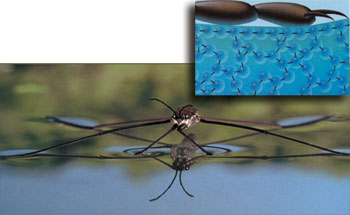 |
The molecules on the water surface establish hydro gen bonds with one another and also with those beneath, giving rise tosurface tension. Some of these hydrogen bonds need to break in order for a light insect to sink beneath the water's surface. |
The force that helps a tiny green grass seed emerge from the soil, and lets giant trees grow several hundred meters (or several hundred feet) tall, is again closely related to the miraculous properties of water. Due to its molecular property and method of bonding, water enters a plant's roots and extends upward along very narrow tubes inside. The water's ascent may sometimes be tens of meters (hundreds of feet), may divide into dozens of branches and twigs. This property of water, which other liquids could not accomplish so easily, is known as capillary movement. At the same time, water is capable of being absorbed. As soon as it comes into contact with substances like wood or gelatin, it is able to penetrate them.18 The way that seeds begin sprouting swell up by absorbing water also stems from this property of water's being absorbable. If not, even though there were water and seeds under the ground, then there would be no trace of the plant kingdom and all life on Earth would disappear.
 |
1. Salt Crystal |
A. Water is a special liquidin which molecules are ableto move with ease. Despite being a solvent, water does not dis solve the skeleton. Allah has com bined the calcium and phosphate molecules that comprise our bones in a special way so as to protect them against the dissolving properties of water. As a result of this perfect creation, the moisture in your body does your bones no harm. B. The hydration layer that forms with hydrogen bonds prevents sodium and chloride ions combining together, so that these two molecules are unable to form salt. |
Because of the weak hydrogen bonds that bring water into existence, this miraculous molecule is able to exhibit heat resistance. If the air temperature suddenly rises, water's temperature increases more slowly. In the event of any sudden drop in air temperature, water temperature falls slowly, and does not cool down as much as the air does.19 This physical behavior is actually a marvel of creation. If water did not possess such an "insulating" property, then water-dwelling organisms could not withstand sudden violent temperature changes, and would soon die off. Moreover, we would also be affected. Since water constitutes around 70% of our bodies, we would be immediately affected by the temperature, and become swiftly chilled or overheated.
Water is also an ideal perfect solvent. A great many substances (sugar in particular) dissolve easily in water because they can build hydrogen bonds with it. Molecules such as salt or minerals, joined with ionic bonds, can also dissolve easily in water. Its solvent property is also very important to our own bodies; it creates a perfect vehicle to transport nutrients to our cells. At the same time, water at body temperature is an ideal liquid for the movement of molecules inside the cell. Despite its solvent properties, however, water cannot dissolve calcium phosphate, so that your own body fluids do not dissolve the bones of your skeletons.20 This special molecular structure that constitutes your bones is made up in a particular way to withstand the solvent property of water.
Different molecules assume different forms inside your body, itself the result of the multiplication of a single cell, to bestow different features on you. While all these anatomical changes were taking place, how could molecules themselves have decided that those to be transported inside the cell should be soluble in water but that your bones should be resistant? How can cells know that nutrients need to dissolve in water? It is of course illogical to expect any cells to be familiar with molecules, know their appropriate levels of solvency, and take precautions beforehand to ensure the ideal metabolism.
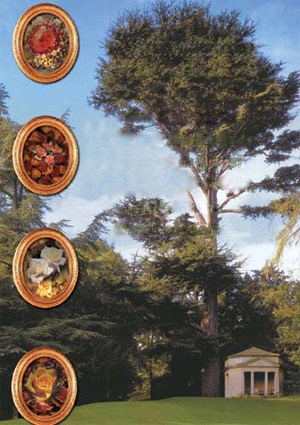 |
Do you not see that Allah sends down water from the sky and then in the morning the Earth is covered in green?Allah is All-Subtle, All-Aware.(Surat al-Hajj: 63) |
These are Allah's sublime creation. Allah has created all these properties possessed by a human fetus, who begins to grow inside his mother's womb, and all the molecules in that body. This is revealed in another verse:
Allah – Him from Whom nothing is hidden, either on Earth or in heaven. It is He Who forms you in the womb however He wills. There is no god but Him, the Almighty, the All-Wise. (Surah Al ‘Imran: 5-6)
Only since the 20th century we humans have been able to investigate the substances that comprise the universe at the molecular level. Water, however, was set out in perfect quantities when this Earth was coming into being and intelligently created with all the ideal attributes for the formation of life. It's a miracle whose detailed properties scientists have only recently discovered. However, Allah created water and equipped it with the ideal properties for living things long before the first living organism came into existence. The fact that all of water's properties arise from what is inherent in two atoms of hydrogen and one of oxygen shows the flawless depth of detail in His sublime creation. Allah reveals in one verse:
In the creation of the heavens and Earth, and the alternation of the night and day, and the ships which sail the seas to people's benefit, and the water which Allah sends down from the sky—by which He brings the Earth to life when it was dead and scatters about in it creatures of every kind—and the varying direction of the winds, and the clouds subservient between heaven and Earth, there are Signs for people who use their intellect. (Surat al-Baqara: 164)
At specific heat and energy levels, the three atoms that make up a water molecule can combine with a second oxygen atom, transforming the formula H20 into H2O2. This seemingly minor alteration changes all the molecule's chemical properties. When it takes on another oxygen atom, the beneficial liquid we were formerly able to drink easily turns into hydrogen peroxide, a substance with entirely toxic properties.
Hydrogen peroxide is a powerful oxidant that destroys or severely damages any organic compounds that come into contact with it. Because of its toxic effect, it plays a role in forming fog and pollution in the air. Due to its powerful chemical effects, it is also effective bleach, oxidizing and eliminating pigments such as melanin, which are responsible for black, brown and sandy colors. In dilute solution, this substance is used to turn dark hair blonde. 21
By itself, the way that atoms produce molecules with a wide variety of features shows a most sublime artistry. However, for a single atom to turn a molecule from entirely useful to entirely harmful, and into a toxic product from one necessary for life, is astounding. What this marvel means is that when Allah so wishes, He can create new properties by means of a single atom, invisible to the naked eye. The enormous chemical difference that develops from the tiny atomic difference between water and hydrogen peroxide shows evidence of a superior creation, the likes of which cannot be imitated in any way. Chance can never account for the formation of this immaculate structure, in which a single atom added to a molecule changes all its properties. Such fine-tuning can only exist under the control of a superior Will that belongs to Allah, Lord of the Worlds.
 |
1. Hydrogen peroxide |
The atoms comprising water combine with another oxygen atom at specific energy and temperature levels, to form a molecule with the formula of H20. This might appear to be only a small change. Yet this newly added atom turns water, which we can use for drinking, into hydrogen peroxide, a toxic and harm fulliquid. |
When you look around, you realize that everything on Earth has been specially created for life. On the molecular level, this fact manifests itself even more clearly. In a realm in which atoms invisible to the naked eye combine together, everything is without flaw. Take the element carbon for example. In many ways, carbon's being different from the other elements has made it indispensable to life. Carbon is the sixth element in the periodic table and constitutes the basis of a great many things, from car tires to the natural gas we use, and from the meat we eat to the DNA in our cells.
It is presently calculated that in the world, there are several million different compounds, brought together in different ways. They may consist of only two atoms combining together, or else of chains and structures of millions. Interestingly, however, each element has the property of giving rise to its own unique compound. Some elements never combine with others; others give rise to only one or two compounds. Yet the element carbon is totally different, in that all by itself, it is able to combine in more than a million different kinds of compounds. Bearing in mind that the total number of compounds on Earth is 2 million, you can see that the other elements apart from carbon give rise to a total of only 300,000 compounds.
When you mix another color with white, the result is always a completely new shade. When you add a third color, the variety of possible colors rises still further. Some colors, however, produce new colors only when added to specific ones. And black swallows up whatever color you mix with it. Apart from a few exceptional cases, you cannot obtain a new color from black. In chemical terms, carbon rather resembles the status of white. It can form compounds with just about every other atom or molecule in nature and give rise to new substances of the greatest importance to life. This means that carbon is a great marvel of creation.
 |
1. The carbon molecule in pencil lead 5. FIZZY DRINKS: Fizzy drinks contain carbon diozide ,a gas that dissolves in the liquid under piressure.When the piressure is released, CO2, comes out of solotion and bublies are given off. 6. DNA: Carbon is a very special element created for life.A great many, structures in the body, imcluding DNA, are based on carbon. 7. Carbonated foodstuffs |
Particularly interesting is the fact that this vitally important element exists in relatively small quantities. By weight, carbon comprises only 9 to 10 percent of the composition of all living things, and only 0.017 percent of the composition of the Earth. 22 Despite its small quantities, however, carbon is present in every part of your life, including in your own body, and cannot be replaced by any other element.
The way that carbon can easily combine with other elements stems from the bonds it establishes with them. By means of its molecular properties, carbon can add the same kinds of atoms to one another and also combining different types of atoms as well. Most atoms generally can establish bonds only with particular other elements and not others. But carbon also establishes very strong covalent bonds with other carbon atoms. Since these bonds are so very sound and strong, they afford the possibility of forming very large molecules. The carbohydrates, proteins and nucleic acids in the human body are sizable molecules resulting from carbon bonds of this kind.
Scientists spent years researching whether there exists any other element that might replace carbon. The element with features most similar to carbon's is silicon, and they therefore assumed that silicon should build the kind of bonds that carbon does. Yet all their experiments were failures: Silicon does not form compounds with other elements in the same way that carbon does, chiefly because of the powerful bonds that carbon establishes with its own atoms. The very powerful bond that forms between two carbon atoms allows the possibility of longer, more stable molecules. Silicon, on the other hand, despite being a very close relative to carbon on the periodic table, was unable to form strong bonds with its own atoms, and the weak bonds it does establish are not appropriate for long chains. In short, no other element in nature is able to replace carbon, once again emphasizing this element's importance.
Scientists are still carrying out research of this kind. The discovery of carbon on other planets will enlighten scientists as to whether there once was life on Mars. Despite all the speculation, however, life forms that are not carbon-based are clearly impossible, for a great many reasons.
A number of conditions must be met for carbon to form its special organic compounds. That's the main reason why carbon-based life survives on Earth, since ours is the only planet known to possess the right conditions for carbon to give rise to compounds.
For example, the temperature range necessary for carbon to form compounds is between –2o and 120oC (between 28oF and 248oF). Carbon compounds begin to freeze at –20oC (–4oF) and to split apart at 120oC (248oF). In a forest fire, for instance, excessive heat totally alters the structure of tree trunks, and the carbon molecules lose their original structure as these compounds are broken down. The carbonized tree now exhibits a different blackened appearance.
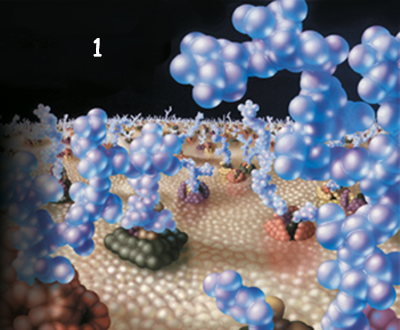 |
1. Carbohydrate Molecules |
Carbon can establish strong covalent bonds with other carbon atoms. Since these bonds are very strong and sound, they permit very large and long molecules to form. Carbohydrates are some of the most vital of these molecules. |
As you have seen, carbon compounds begin to break down outside of even a small temperature range. Therefore, if such a change were to prevail over the whole world life would disappear. This is one of the most important proofs that a special creation exists in the world. The temperature range that permits organic carbon compounds to form exists only on Earth. And this is a most narrow temperature range. In comparison, the temperature on Venus—the next planet closest to the Sun in the Solar System, is 450oC (842oF). And on Mars, the next planet after Earth, the temperature is –53oC (–63oF). In such burning heat and freezing cold, carbon cannot form organic compounds. And in space, stars have temperatures of millions of degrees Centigrade (or Fahrenheit), and the temperature in open space itself is –273.15oC (–460oF), or absolute zero.
Within such a stunning temperature variation, only Earth lies within the temperature range suited to carbon-based life forms—a great blessing and evidence of a special creation. The important thing is to comprehend one's need of Allah and to appreciate His greatness by seeing His matchless artistry. Allah reveals this truth in the Qur'an, in the following terms:
Have you thought about what you cultivate? Is it you who make it germinate or are We the Germinator? If We wished, We could have made it broken stubble. You would then be left devoid of crops, distraught: "We are ruined, in fact we are destitute!" Have you thought about the water that you drink? Is it you who sent it down from the clouds or are We the Sender? If We wished, We could have made it bitter, so will you not give thanks? Have you thought about the fire that you light? Is it you who make the trees that fuel it grow or are We the Grower? (Surat al-Waqi‘a: 63-72)
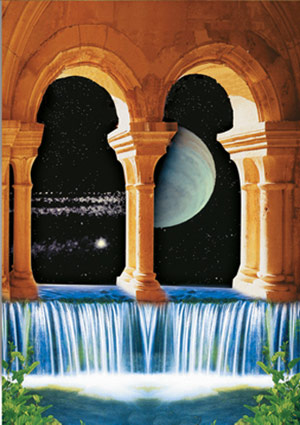 |
Allah is He Who raised up the heavens without any support-you can see that-and then established Himself firmly on the Throne.He made the sun and moon subservienti each running for a specified term.he directs the whole affair.He makes the Signs clear so that hopefully you will be certain about the meeting with your Lord.(Surat ar-Ra'd: 2) |
Your body consists entirely of molecules. Your eyes, hands, brain, muscles, the genes that determine all the physical characteristics, your cells and the proteins that permit those cells to live are all assemblages of molecules. Similar collections of molecules are also present in nature—in the soil, for instance, in stones, rocks and metals. But unlike you, these are not alive. Your body consists of atoms, as does the soil you walk on. So what makes you different from that soil?
A materialist will reply, "The atoms that comprise a human being are better organized. That is the only difference." He will suggest that this organization was carried out by nature itself, during the process he refers to as evolution.
In fact, however, such as claim goes against all the observations and experiments performed on this subject, and also flies in the face of logic. Because:
1) In terms of properties, there is no difference between the atoms that make up inanimate objects and those that comprise your body or other living things. Therefore, the fact that one set is better organized does not impart to them any new qualities. As an analogy, think of the subatomic particles such as protons, neutrons and electrons as individual stones. You can arrange these stones in different patterns—side by side, top one another, or in a line. You can put them all together or separate them, but whatever organization you impose on them will not impart any new qualities to these stones. Even when you come up with a perfect sequence, these stones will not begin to think, speak, or sing. In the same way, the different organization of atoms and the particles that comprise them will not give them any feature that they did not already possess. It cannot bring them to life. It cannot turn them into thinking, speaking living human beings.
Despite the materialists' claims to the contrary, they cannot provide any experimental evidence. In other words, to constitute a basis for their claim, they need to be able to take inanimate matter, organize it, and produce a living entity from it—as they assert took place in the past, when life on Earth first began to appear. In fact, scientists have never managed to do such a thing. And its impossibility is so plain that they have abandoned any attempt to create life from inanimate substances.
In short, the idea that life can emerge through the mere organization of atoms flies in the face of both logic and the scientific facts. All observations and experiments confirm what Allah tells us in the Qur'an:
. . . Those whom you call upon besides Allah are not even able to create a single fly, even if they were to join together to do it. And if a fly steals something from them, they cannot get it back. How feeble are both the seeker and the sought! (Surat al-Hajj: 73)
 |
Your body and the ground you walk on both consist of atoms. This does not mean, however, that the atoms that comprise inanimate substances organize and come to life on their own. Therefore, the origin of living things doesnot lie in atoms combining together. There is a most sublime intervention, creation and power at the origin of living things—the creation of Almighty Allah. |
2) Additionally, no force or mechanism in nature could organize atoms. The process materialists refer to as evolution has never been observed, and not the slightest evidence for it has ever been found. It is simply a myth. No chemical process, nuclear reaction or physical event has been seen to organize atoms into establishing the complex systems present in living things. Certain chemical phenomena that Darwinists misleadingly refer to as "self-organization" (such as crystallization, entropy decrease in open systems, etc.) are in fact merely examples of simple ordering. It is perfectly obvious that these can never account for the origins of the complex systems essential for life. (See Harun Yahya's Darwinism Refuted.)
These facts lead to a most important conclusion: It's impossible for the atoms that constitute inanimate substances to come to life, either by evolving or through human intervention. The origin of living things cannot, therefore, lie in these atoms combining. There is a sublime intervention, creation and power in the origin of living things.
This is Almighty Allah's creation. Indeed, in the Qur'an, He draws our attention to the fact that He gives life to inanimate things:
. . . He brings forth the living from the dead, and produces the dead out of the living. That is Allah, so how are you perverted? (Surat al-An'am: 95)
Giving life to inanimate matter is a supernatural event—in other words a miracle, and belongs to Allah alone. Another miracle that belongs to Him alone is the way that one of these living things is given a soul with a high level of special consciousness, in contrast to all the others. That human soul is a blessing from Allah. As is revealed in Surat as-Sajda verse 9, Allah first created the human body and then breathed His Own soul into it.
Therefore, two separate elements make humans human: their bodies composed of atoms, and the souls breathed into them by Allah. Materialists, who imagine that human beings are merely matter consisting of atoms, are put in a terrible impasse by of this belief to which they adhere so blindly.
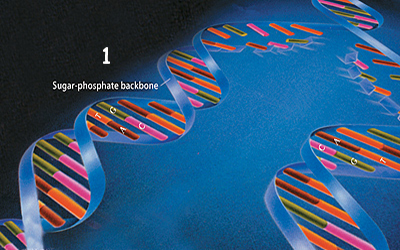 |
1. Sugar-Phosphate Backbone |
The arms of the DNA ladder consist of sugar and phosphate molecules. Some bases combine with these arms with hydrogen bonds. As a result of this special creation, DNA is sufficiently flexible to replicate and transmit data. |
In order for molecules to have come to life spontaneously, as materialists claim, they would need to combine in a flawless organization, agree to a division of labor among themselves, contain information within themselves, never make any mistakes, know how to perform such functions as digestion and respiration, both flawlessly and constantly, and most important of all, be able to plan and actually think. That is because we are dealing with a single molecule, a sublime creation that exhibits a greater intelligence than all the human beings who have ever lived, and possesses information that surpasses human comprehension.
In every single cell in your body, you have one of these molecules, far more intelligent than you. That molecule is DNA.
The DNA molecule resembles the sides of two spiral staircases revolving around each other in a helix. The "steps" are formed of sugar and phosphate molecules, attached to one another with a rather strong special bond known as the ester bond. This bond is a rather strong one. There is no haphazard sequence in the steps, or rungs between the two arms of DNA. The rungs are joined together with a special locking system and have four separate elements: adenine, guanine, cytosine and thiamine. Of these four nucleotides, Adenine and Guanine are large molecules and Cytosine and Thiamine are small. In order for rungs to form in a regular manner, guanine always appears opposite cytosine and adenine opposite thiamine. In this way—since small bases are always opposite larger ones—the distance remains stable at all points, the result being a regular double helix.
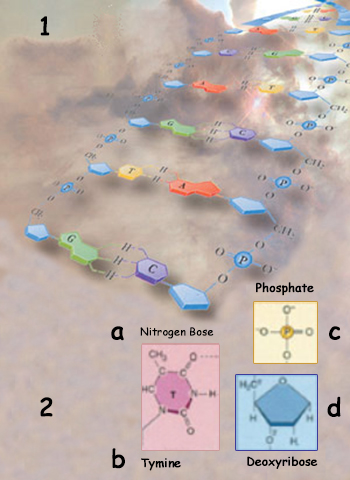 | |
a. Nitrogen base | c. Phosphate |
1. Nitrogen bases pro duce hydro gen bonds that join the DNA arms. T pairs form two bonds with A pairs, and G pairs form three bonds with C pairs. 2. Due to its hydro gen bonds, the DNA helix is exceptionally regular, and the DNA molecule makes very regular turns. The covalentester bonds in the back bone give this molecule a strong structure and preventits breaking or stretching, even though it is tightly folded in the cell nucleus. Through these two different bonds, DNA is sufficiently mobile and strong to performall its functions. | |
The chemical bond formed among these four contraposed nucleotides is a hydrogen bond, and that the DNA molecule consists of hydrogen bonds is particularly significant. As you'll recall, the distinguishing feature of hydrogen bonds is their elasticity. Since these bonds are not as strong as the ester bonds binding the nucleotides together, they can easily break in the presence of pH difference, heat or pressure. The importance of the elasticity in the bonds is this: It is possible for DNA to be copied and for genetic information to be transmitted to other cells only by means of this property of elasticity.
As you know, DNA needs to replicate itself during cell division, so that each "daughter" cell can possess its own identical data bank. Therefore, immediately before the cell divides, DNA produces a copy of itself, first dividing itself down from the middle, like a zipper. In order to replicate itself, the missing halves of both sections are completed with materials ready in the cellular environment, and thus two new DNA molecules result. By means of the elasticity of the hydrogen bonds, DNA can split down the middle during this process. If this DNA helix was attached with a different type of bond, then the "steps" holding the two halves together would be exceedingly hard and inflexible and it would be impossible for DNA to divide in two. Either such a division would not take place at all, or else all the bonds would break when the two parts of the helix exhibited a tendency to separate from one another, and the molecule would break apart. If DNA could not be copied, life would be impossible.
The hydrogen and other bonds that form DNA make the helix exceedingly regular. For this reason, the DNA molecule makes regular turns without being bound to the chain sequence order. The nucleotides that form DNA, being bound to one another with phosphate bonds, produce a backbone in which sugar and phosphate sections follow one another in a series. These bonds, known as covalent bonds, are extremely strong. These bonds make the DNA molecule highly stable and resistant, even when it has only a single-chain structure. While the hydrogen bonds in the middle are able to split away from one another easily, no breaking occurs in the chains attached to the helix at the side, which are attached with covalent bonds. 24
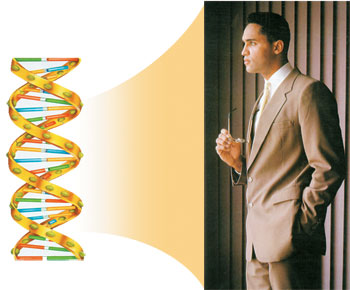 |
The DNA molecule contains enough information to fill a million encyclopedia pages. This information "explains" everything to do with you. Everything, from your hair color to your blood group, from your height to your bone structure, has been implanted in this databank—which in fact is a molecule invisible to the naked eye. |
Mutations, which generally have fatal results or else totally destroy the cell's function, arise from the breaking of these ester bonds among the nucleotides. 25 Within the molecule, however, this binding is so strong that such impairment rarely happens. The enzyme molecules inside DNA immediately act to prevent the possibility of such defects arising. Inside such a complex system, the presence of another protective precaution is a separate and utterly amazing fact.
The human DNA molecule contains enough information to fill a million-page encyclopedia. This information comprises everything to do with you, from the color of your hair to your blood group, from how tall you are to the structure of your bones and the activities of the enzymes that serve your metabolism in a most orderly manner. All this and more is packed into this flawless molecule. But what exactly all this information is packed into?
The information in DNA is recorded in letters, just like in a book. A book in English consists of 26 separate letters laid out side by side to impart information. The letters in DNA, on the other hand, are the four nucleotides that comprise this giant molecule: The Adenine, Thymine, Guanine and Cytosine are referred to as A, T, G and C for short. When hundreds of these four molecules are taken together, what emerges are long, meaningful "sentences" or genes, which describe how processes in the body will be performed, and which encode the needed data for these to occur.
The origin of the data in DNA is another dilemma that materialists cannot resolve. They cannot account for the information encoded in this molecule in terms of any natural mechanism. All observations and experiments show that information derives from a conscious entity. The information in DNA is the work of Almighty Allah, the Creator of all life. Our Lord's creative artistry and infinite might are explained in these terms in verses of the Qur'an:
That is Allah, your Lord. There is no god but Him, the Creator of everything. So worship Him. He is responsible for everything. Eyesight cannot perceive Him but He perceives eyesight. He is the All-Penetrating, the All-Aware. (Surat al-An' am: 102-103)
Our bodies are made up of molecules like DNA, having a great many other superior attributes. Just about all the molecules in your body are hydrocarbons, consisting of hydrogen and carbon atoms. In hydrocarbons, the main molecular backbone is formed of carbon atoms, tightly attached to one another by covalent bonds, which make the carbon backbone very strong.
The molecule found in the largest quantities in the body is water, at a level of 55 to 60%, followed by organic (carbon-based) molecules at a level of 30 to 35% and inorganic molecules at 5%. Organic molecules mainly consist of lipids—fats and proteins. Fat and water molecules are inversely proportionate to one another. While one of them increases, then the other declines.26 All molecules perform important functions in the body, which they discharge completely, inasmuch as the purpose behind their creation is to serve as vehicles for human life.
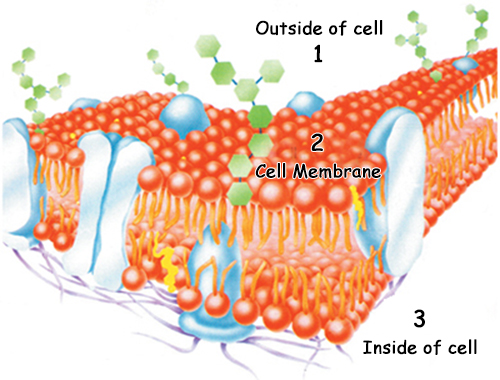 |
1.Outside of cell |
Being a special molecule, water can be found in every organ elle in the body and serves in a great many ways, from transporting nutrients to forming varius structures. The cells are completely compatible with water's physical and chemical properties, so that water can enter the cell with out difficulty and be expelled in the same way. |
The water molecule, of such importance to the world, also reveals its importance in the human body. In the human body, water is distributed in an appropriate and purposeful manner among the various organs and tissues. Not a single organ or tissue in your body does not contain water. While there is only a small amount of water in the teeth and bones, it occurs in much larger quantities in the muscles, the kidneys, the liver, blood, the cornea of the eye, and other "soft" tissues. In fact, 98% of the cornea, 79% of the blood and 77% of muscles is water. Therefore, no organ can survive without a regular supply of water to the body.
Water can be present in bound or free forms. When bound, it loses its ability to flow and remains motionless in metabolism. In its free state, it generally constitutes the fluid inside the cell and veins and the extracellular fluid filling the spaces between cells. Large molecules such as proteins, carbohydrates and nucleic acids also contain water. Bound water, known as intermolecular water, is found between fibers and membranes.
Water has various distinguishing features; it is found in three different states, and has deliberately determined boiling and freezing points, and is attached by means of hydrogen bonds. Water is a special molecule that is found in every organelle in the body and serves many functions, from transporting nutrients to forming various structures. It can easily enter and be expelled from the body. Inside cells, it constitutes an environment where reactions dealing with enzymes and chemical energy transfers can occur. The cell's structure and functions demonstrate complete compatibility with water's physical and chemical properties. In short, the living body is an ideal environment for water to be present in various forms.
Water accomplishes exceedingly important functions throughout the body mainly through ionization—the process of an electron leaving or joining an atom that comprises the molecule. The water entering the body is separated into hydrogen ions (H+) and hydroxide ions (OH)—a division of vital importance, because the H and OH levels for the cells have been predetermined, and the levels of ions in the blood—expressed as pH values—need to be kept constant.
The body's pH is exceedingly important. In nature, pH value can range from 0 to 14 but in the body, it must remain around the 7.4 level. If this level falls to 6.8 or rises to 8.0, the result is death. 27
Renal insufficiency, or kidney failure, is the main reason why someone cannot maintain a normal blood pH level. The surprising and miraculous fact is that only one out of every 10 million water molecules entering the body is ionized.28 If for any reason, not a single water molecule is ionized, death will ensue sooner or later. No matter how much effort may be expanded, no earthly power can reproduce this perfect system. A single ionized water molecule is the perfect level determined for the human body. This delicate creation is one of the proofs of Allah's matchless artistry. In one verse, He reveals:
Everyone on [the face of the Earth] will pass away; but the Face of your Lord will remain, Master of Majesty and Generosity. So which of your Lord's blessings do you both then deny? Everyone in the heavens and earth requests His aid. Every day He is engaged in some affair. So which of your Lord's blessings do you both then deny? (Surat ar-Rahman: 26-30)
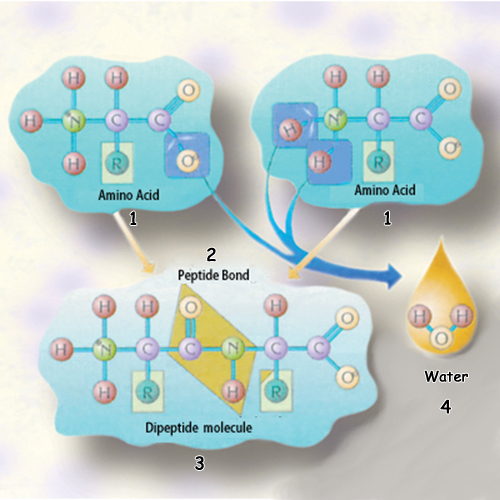 | |
1. Amino Acid | 3. Dieptide Molecule |
All of the 20 amino acids that make up proteins possess a common structure. The only thing that distinguishes any one from the others is itsside chains. Due to the different atoms and bonds acquired by side chains, they possess different structures, which permit the 20 different amino acids to give rise to 10130 different proteins with differing sequences. This, of course, is a matchless creation. | |
If proteins are like buildings, then amino acids are the bricks of those buildings. There are 20 kinds of amino acid in nature, and these amino acids are bound to each other in a particular sequence for each protein. This bonding is unique for each protein, which contains at least 300 amino acids.29 For example, in the manufacture of a single protein, the amino acid called glycine joins the sequence in 20 or 30 places. The sequencing of these amino acids are flawless, since a protein molecule can serve its purpose only so long as it possesses that exact sequence. The slightest error in that sequence will result in a useless assortment of molecules. Yet generally, we never encounter such an eventuality thing. Amino acids always combine in a perfect order to fulfill their functions in forming protein molecules.
The 20 amino acids in protein molecules all share a similar structure. Each amino acid contains a carbon based carboxyl group and an amino group. The only difference between these amino acids, otherwise identical in terms of structure, is their side chains. Because of the different atoms and bonds composing these side chains, the amino acids possess different structures and electrical charges and different levels of solubility in water.
In order to give rise to proteins, amino acids attach to one another by means of what's known as peptide bonds. The arrangement of amino acids, attached by peptide bonds, determines the proteins' three-dimensional structure. Proteins assume different functions according to their structures and use the cell's chemical reactions in various stages. If a cell needs energy, proteins perform different chemical reactions. If the cell requires amino acids, the proteins break down into amino acids. In addition, proteins also act like building bricks in the cell membrane. In short, proteins are used almost everywhere throughout the cell. 30
A protein's three-dimensional structure determines its functions. A protein molecule that's tensed or curved, folded at random, is biologically unusable. In order for a protein to function properly, its atoms must be set out in an appropriate manner. Any protein that possesses the same atoms, but not in a particular order, cannot perform its protein functions.
The protein's three-dimensional structure arises from the bonding of the atoms that form this molecule. Biochemistry and biology textbooks discuss in generally technical terms how a regular order emerges in this microworld, and how way that this order endows proteins with important functional characteristics. Yet scientists, realizing that molecules had been bound together this way for billions of years, were amazed by this property that they had discovered only recently, and began to inquire into the source of this perfection.
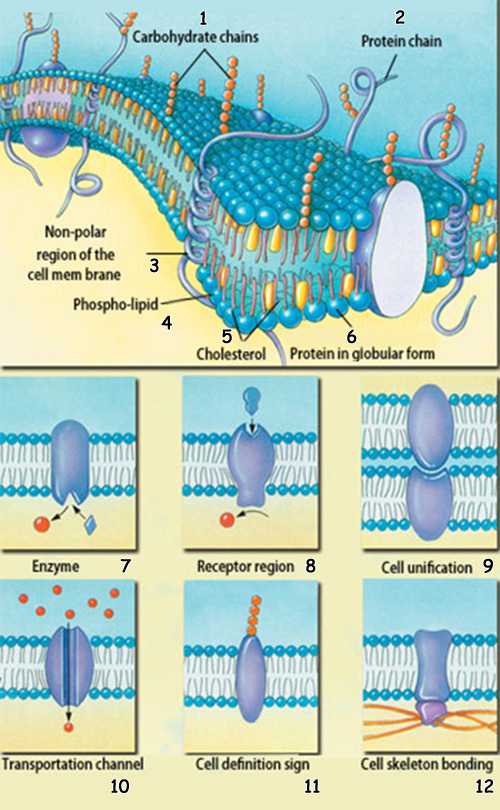 | 1.Carbohydrate chains |
In order for a protein to function, its atoms need to be arranged appropriately. This structure formed by the combination of atoms is a three-dimension alone, and only when proteins have a three-dimension al structure do they become able to serve through out the body. If the atoms comprising a protein were bound to one another in other ways, not only might the molecule disappear, but also the organism might die. That atoms achieve this perfect structure is one of the beauties and blessings of Allah, Who reveals His sublime and immaculate artistry in every detail He creates. The existence of the Earth and the universe—and the way its perfection prevails for the continuation of life, from the small estsub a tomic particles to proteins, from the cell to all the systems in the universe—again demon strates the flawless creation of Allah, our Lord. |
Were perfection not complete, even a single error could eliminate not only the molecule, but also the entire organization which that molecule supports. The way that unconscious atoms achieve this perfect structure is evidence of the creative artistry of our Lord, Who displays sublime artistry in all that He creates. Everyone who examines the magnificent microworld possessed by a single molecule is amazed by its impeccable artistry. The flawless structure necessary for life to come into being appears before us everywhere, from the smallest subatomic particles to the universe itself. Allah reminds us of His might, greatness, superior creation and lack of any deficiency in all the entities He creates, down to the smallest particle.
He reveals this in these terms in His verses:
He Who created the seven heavens in layers. You will not find any flaw in the creation of the All-Merciful. Look again – do you see any gaps? Then look again and again. Your sight will return to you dazzled and exhausted! (Surat al-Mulk: 3-4)
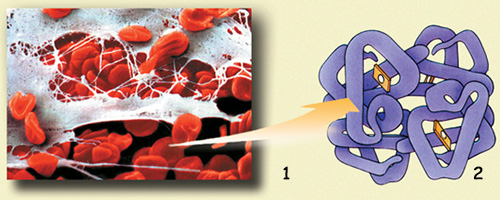 | |
1. Blood Cells | 2. Hemoglobin Molecule |
In globu ar proteins, the amino acid chain bends irregularly to assume a spherical shape. Almost all the known enzymes, anti bodies, some hormones and hemoglobin have a globular protein structure. Globular proteins are soluble in water and not physically resistant. These mobile structures we have listed can only serve a purpose with a protein structure with the features in question. | |
Protein molecules are of two types, depending on their characteristics. The first, fibrous proteins, exhibit a regular structure around an axis. They are found in bone tissue and tendons connecting muscle to bone. Fibrous proteins are insoluble in water and have an exceptionally resistant physical structure.
In the second group, known as globular proteins, the amino acid chain bends in an irregular manner and assumes a spherical shape. These proteins are soluble in water, and are not physically resistant. You might consider this to a disadvantage, but in fact this weak structure is of enormous importance for the human body. The cell's globular proteins are able to move. Almost all the 2,000 known enzymes, antibodies, some hormones and hemoglobin all have globular protein structures. Some proteins exhibit both fibrous and globular characteristics: Even if they resemble fibrous proteins in their structure, they have globular proteins' ability to dissolve in saline solutions. The myosin in skeletal muscle and the fibrinogen molecule that permits blood to clot are members of this group. 31
Differences in protein structures are by themselves evidence of the superior creation of the human body. The two separate protein structures, with their appropriate different properties and shapes, are found exactly where needed. Proteins that give rise to bone tissue exhibit a sound structure and are insoluble in water. If globular proteins were to give rise to bones, then these tissues would dissolve in the body (which consists of 60% water), and the skeleton would never be able to support itself. If the opposite were to occur—if fibrous proteins were to be the mobile proteins in the cell, then their hard, resistant structures would never be able to function. In that case, the enzymes that regulate the body's metabolism could never form. It is impossible for an organism whose enzymes serve no function to survive. The difference between two vitally important protein molecules is merely their shapes, the sequences of the atoms that comprise them, and how those atoms are bonded together to determine those shapes.
The same atoms combining together in different shapes and producing two such different results is a miracle. Unless you have received a sufficient level of training on the subject, you cannot possibly dismantle a television, rearrange the components in a totally different way and come up with a fully functioning set. However, very much more complex processes than that are performed within the body. When the same atoms that make up one protein are bound together differently, they form another functional protein with different properties. No error ever occurs while all this is taking place, and every protein knows the purpose for which it has been manufactured, because each one is the impeccable work of Almighty Allah.
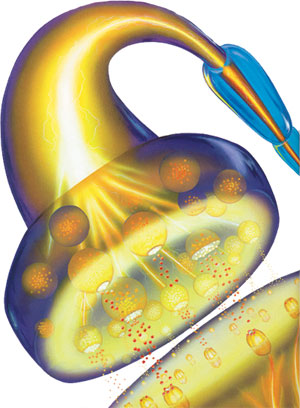 |
Many nerve cells end in a spherical mass, a globular region surrounded by sensitive receptors compatible with chemical molecules and known as acetylcholine. When an impulse forms in the nerves, acetylcho line heads directly for this space and transmit the stimulus by attaching to the receptors there. In order for this process not to be carried out con stantly, an enzyme known as acetyl choline esterase neutralizes the effect of the acetyl choline in that region. This enzyme is an important component of the nervous system, essential for us to enjoy healthy lives. |
Some proteins have an enzyme structure and regulate metabolism by constantly taking part in chemical reactions inside the cell. There are more than 3,500 enzymes in a human cell.32 In the event that even one or a few these are missing, intracellular activities may become totally jumbled. The result of that would be the fragmentation of the cell—in other words death.
Enzymes' most important duty is to assist in copying of the DNA molecule. In addition, these intelligent molecules are constantly at work inside your body to ensure that you can breathe, stand up, eat, see, speak, grow and develop. Large molecules produced according to the genetic codes recorded in DNA by an organelle inside the cell known as the ribosome send the relevant messages to their proper destinations within the body, know which organ has to go into action to achieve a particular process, remove excess substances from inside the cells and constantly travel about in the body to operate. These molecules all serve as highly competent supervisors.
The only difference between an enzyme molecule and any other protein molecule lies in their three-dimensional shapes. If enzymes did not possess a three-dimensional form that determines their features, then there could be no supervision of intra-cellular processes. The transmission of information from the brain via nerves to the various organs, and many other processes necessary for life, could not take place. The absence of a single enzyme to correct any errors that occur during the replication of DNA might result in a gene with no function or, even worse, to give rise to cancer. Enzymes' way of affecting various processes by reaching different parts of the body is yet another molecular miracle. The enzyme must recognize the molecule that carries news to it, or which it causes to change or set in motion. From the molecule's shape and structure, the enzyme understands what kind of reaction this molecule might undergo. Having recognized this molecule, it now initiates a reaction and brings about a number of characteristic changes in the molecule's structure. 33 The molecule's complex three-dimensional geometry is wholly compatible with the enzyme's molecular structure, just like a key fitting into a lock. When the two molecules clamp together, they can thus interact with one another. By means of this locking system, the enzyme carries out the changes that need to occur in the molecule. Thousands of reactions take place inside the cell, and there are thousands of different enzymes to let these changes occur. Every minute, thousands of enzymes enter into reactions in every one of your cells. Sometimes a single enzyme carries out this process, combining with 300 different molecules a second. In order for enzymes to be active so that these reactions can take place, the body's temperature and pH must also be at specific levels. Above a certain temperature, enzymes and proteins break apart. At the same time this also causes all the proteins to fall apart. Therefore, the body's sensitive system is specially created that all these processes can take place. Any imbalance in these levels can cause total impairment of the body's metabolism.
Don't forget that enzymes are minute collections of atoms, too small to be seen with the naked eye. The way that one assemblage of atoms recognizes another collection of atoms and determines its features clearly shows that it is under the control of a separate will. Evolutionists maintain the exact opposite, suggesting that such conscious intent came into being by chance, but when they find themselves faced with the cell's extraordinarily complex structure, they are perfectly well aware that no such system could ever emerge by chance. Yet as a result of their world views and denial of the existence of Allah, they constantly seek to reject this truth. Their illogical aims are aimed at rejecting the absolute existence of Allah. In fact, however, everything created by Allah clearly indicates His existence and greatness.
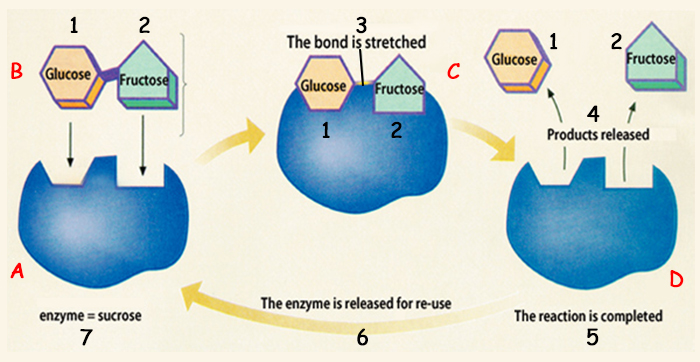 | ||
1. Glucose | 3. The bond is streched | 5. The reaction is completed |
Enzymes accelerate chemi al reactions in the cell. | ||
Professor Cemal Yildirim, one of Turkey's foremost proponents of the theory of evolution, has openly stated the impossibility of life coming into existence spontaneously. He considers the improbability of any enzyme molecule coming into being outside the cell by chance:
A typical enzyme consists of 100 amino acids. Since there are 20 amino acids, we are talking about 20100 combinations. The odds of a specific enzyme coming into being by chance—in one go, within that many combinations—is 1 in 10130.34
Professor Ali Demirsoy, an evolutionist molecular biologist, cannot hide his amazement in the calculation of the probabilities of enzyme formation:
An enzyme consists of an average of 100 amino acids. The number of combinations resulting from an enzyme consisting of 100 amino acids with 20 amino acids is 20100. Bearing in mind that the number of atoms in the universe is 1080 and that the number of seconds that have passed since the formation of the universe is 1016, then you can see how small the odds are of an enzyme with a specific sequence coming into being are. So how did enzymes come into being? 35
One reference sets out the impossibility of enzymes coming into being spontaneously by the use of the following calculation:
It is estimated by one evolutionist [Fred Hoyle] that there are 2,000 different complex types of enzymes in a living organism. Not one of them could be formed by random, shuffling processes in even 20 billion years! 36
Remember that there are more atoms in a single period on this page than there are stars in our galaxy. The number of atoms in the universe is 1080 . This is a number far beyond human conception—80 zeroes coming after 10. Therefore, the 1 in 10130 probability of an enzyme of 100 amino acids coming into being spontaneously is, in practical mathematical terms, zero. In other words, it is not possible. In the face of this, it is also mathematically impossible that a single enzyme, selected from among the millions of special molecules in the body, can have come into existence by chance.
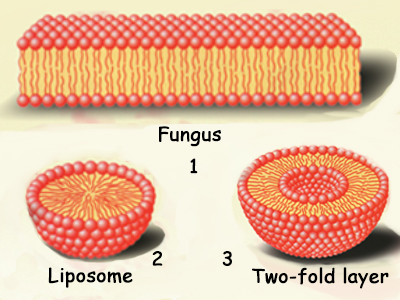 |
1. Fungus |
The diagrams show cross sections of the cell membranes of three different structures. All the membranes in these structures possess molecules equipped with very special features. The cell membrane possesses molecular priority, through which essential substances such as glucose are admitted into the cell while harmful substances are excluded. Also by means of this special structure, the needs of the cell are identified. This is just one of the incom parable miracles created by Allah. |
The molecular structure of the cell membrane is a chief focus of present-day research by cell biologists and biochemists. This is because the cell membrane is an exceedingly complex organelle with important biological features and a specific, well organized structure, equipped for the protection and nutrition of the cell and all the process it carries out. The cell membrane is equipped with rather important attributes for the protection and nutrition of the cell and all the process it carries out reveal great intelligence. Although many important features have been discovered, all the functions of the cell membrane remain a mystery to this day.
The cell membrane consists basically of fat and protein molecules, yet in it there are also structures—ion and molecule pumps—with very different characteristics and from these structures arise the miraculous aspect of the cell membrane. These microscopic pumps are responsible for the cell membrane's selectively permeable structure, which admits only certain substances from outside the cell.37 The cell membrane's pumps absorb such nutrients as glucose and also ensure that possible harmful or excess substances are removed from the cell, while harmful outside substances are prevented from entering. This flawless structure also identifies the cell's needs and allows to enter no more nutrients than are necessary. In short, this miraculous membrane displays intelligence by selecting and evaluating other molecules, making decisions and performing a task that one would not expect of it. As an example of just how essential this feature of the cell membrane is, the reason why snake venom can be lethal is that it breaks down the cell membrane, thus allowing all kinds of harmful substances to enter.
The molecular pumps and the gates that permit passage through the cell membrane are very intelligent in selecting the materials that they allow to enter. Different substances that enter the cell naturally come in different sizes—from minute electrons and photons, protons and ions, to small molecules such as water, medium-size molecules such as amino acids and sugar, and rather large molecules such as protein and DNA. By way of its pumps, the cell membrane can admit a necessary molecule, no matter what its size. If the molecule is too large to pass through these gates, then the membrane signals on enzymes nearby for assistance, to widen the gate on the cell membrane.
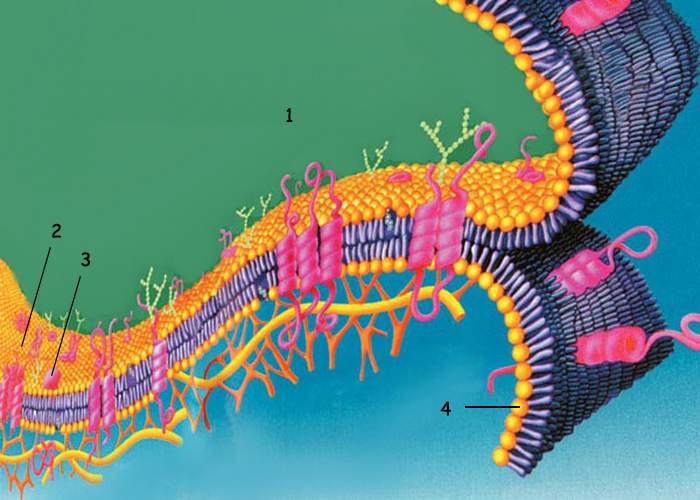 | |
1. Exterior of cell | 3. Fibrous binding protein |
Through the various pumps and channels in the cell membrane, some molecules can travel with ease between the inside and outside of the cell. All these molecules ensure their passage by going to a channel suited to them. | |
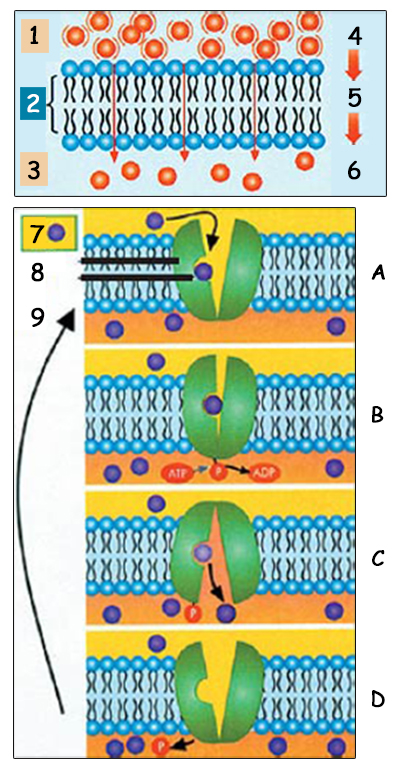 | 1. High-Concentration Region 4. Molecules strike one another at random in the high-concentration region. 5. Those that strike 6. Tranmit the spreading molecule to the low-concentration region. 7. Dissolved molecule |
A. A dis solved mol e cule attach - es to the open, bond ing region on the trans port pro - tein in the cell mem brane. B. ATP transfers phosphate to the transport protein. C. The phosphated transport protein changes shape opens and deposits the dissolved molecule in the cell. D. The phosphate leaves the transport protein, which returns to its original form. It is now ready to transport another dissolved molecule. |
Once this molecule has been admitted, the enzymes go back into action to return the gate to its previous state. During this process, no harm befalls the gate, the cell membrane, or the cell. The molecules act together in a division of labor just as if they were communicating. If there were no molecules with such features on the cell membrane, it would definitely mean the end of life. In the absence of these gates, nutrients could not be admitted to nourish the cell and the waste products inside could not be expelled. Could any one of the hundreds of different molecules within the cell assume the responsibilities of these molecules? That is also impossible. Every molecule inside or outside the cell is responsible for discharging its own functions. If molecules are absent from the cell membrane, their functions cannot be performed by any others. They are one of the countless features that we usually are not aware of, which have been specially created to protect the cell and thus, human life.
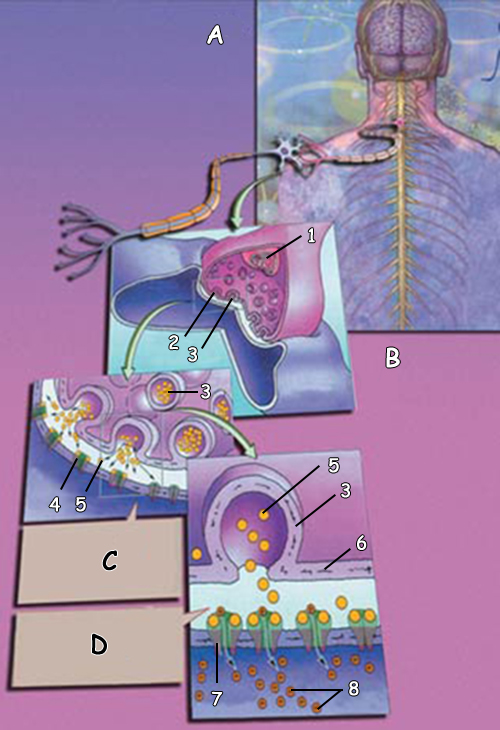 | A. The cell mem brane also plays an impor - tant role in the trans mis sion of data with - in the body. Due to the elec tri cal ly charged areas on the cell mem brane, an elec tri cal poten tial forms between the mem brane's two sides. This poten tial ini ti ates an elec tri cal cur rent, which per mits infor ma tion to be trans mit ted along the nerves to the brain. B. In the absence of this impor tant elec tri cal cur rent between the cells, ini ti at ed by the mol e cu les, there could be no com mu ni ca tion with in the body. Therefore, every - thing you feel, see or taste results from this elec tri cal cur rent, pro duced by the sub - lime cre a tion in the cell mem brane. C. Stimulating forwarders, custom binding to receptors on the opposite side of the synapse synapse Taking sac activates them. D. Alert transmitters, channels, activating the sodium ions rapidly towards the region after the synapse, began to move. Sodium ions formed by a warning that the electrical mobility starts. |
1. Mitokondri |
The cell membrane possesses other important attributes. On its surface there are electrically charged areas, by means of which an electrical potential forms between the two sides of the cell membrane, and the transmission of information along nerve cells to the brain takes place as a result of this electrical potential in the cell membrane.38 Signals coming from anywhere in the body are transmitted to the brain by means of various electrical impulses. If the molecules did not initiate such electrical impulses; there could be no communications within the body. You could not feel anything you touched, because what you feel is electrical signals transmitted to the brain from your hand. If these signals did not travel to your brain, you could not perceive anything. And it is impossible to sense anything that the brain cannot perceive.
The molecules in the cell membrane can also repair any damage that the membrane might incur. In the event the membrane is torn or punctured in, these molecules immediately identify the damage and soon repair it.39 These molecules constantly monitor the membrane. Like other molecules, they too, know their duties and do not interfere in any other tasks inside the cell. The absence of these molecules would mean that impairments could not be rectified, and that cell damage would give rise to various illnesses, possibly fatal. It is impossible for such a mechanism to come into being by chance. To claim that this system has occurred by chance once again shows the total illogical displayed by evolutionists.
Also on the cell membrane, there are receptor molecules capable of perceiving various kinds of information arriving from outside. These receptors consist of various proteins with a mosaic-like structure, and highly sensitive to hormones and data-bearing molecules inside the body.40 This information, again, is encoded by the shape of the data-bearing molecule. When its shape is compatible with the proteins on the surface of the cell, the two molecules recognize one another, and communications are thus established.
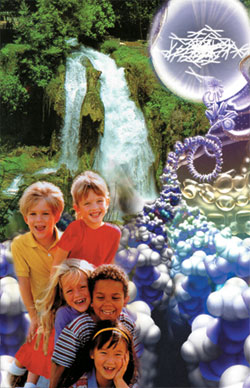 |
It is He who has created hearing, sight and hearts for you. What little thanks you show! (Surat al-Muminun: 78) |
Any single mistake in a molecule may harm you or even lead to your death. Yet all these molecules clearly demonstrate that they are under the command of a superior Intellect and so, never make any errors in their activities. The 100 trillion DNA molecules in your body and the 100 trillion cells that contain them 41 and make you unique, the nucleotides that give rise to DNA, the proteins that compose the cell, the enzymes that so perfectly regulate the traffic between them, all possess an incomparably sublime organization and order.
Clearly, in this microscopic world that cannot be seen by the naked eye, a human being's rational, conscious mind can't possibly result from any random combination of atoms and molecules. It would also be illogical to claim that atoms can bond in the necessary manner, determine functions for themselves, order themselves accordingly and manage tasks that even biochemists cannot accomplish. How did inanimate and unconscious atoms come to life and acquire consciousness? This important question places Darwinists and other materialists in a major dilemma that leads them to question their ideologies.
Even if all the scientific experts who ever lived made use of all possible technological means, they could still not produce a living organism simply by bringing atoms together. The sophistication clearly evident at the molecular level presents an impasse for Darwinists. Their statements and publications keep relating scenarios the chance development of life. But in fact, it is meaningless for them to make proposals regarding how life evolved when they cannot scientifically account for its origin. The plain truth is that life is too flawlessly complex to be accounted for in terms of chance phenomena. Allah reveals the position of these people who regard coincidence as a so-called deity and who search for creators other than Him:
Do they make things into partner-gods which cannot create anything and are themselves created; which are not capable of helping them and cannot even help themselves? (Surat al-A‘raf: 191-192)
Whenever "sugar" is mentioned, the first thing that springs to mind is the sweet granular substance stirred into tea or used to bake cakes. However, the sugar you use in daily life is just one variety of the very wide range of sugar molecules found in nature and which have a very broad sphere of use. Sugar molecules are a member of the broad group called carbohydrates in the language of chemistry. The sugar molecules we are examining here are all members of the carbohydrate group.
Glucose and glycogen—living things' most important sources of energy—the starch that results from photosynthesis in plants, and the cellulose that forms the most cell walls in plants, are all actually carbohydrates. In the matchless structure of cell membranes there are also carbohydrate molecules combining together.
Carbohydrates consist of carbon, hydrogen and oxygen atoms. Hydrogen and oxygen are present in carbohydrate molecules in the same ratios as they are in water.
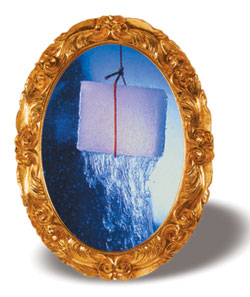 |
Glucose is the main source of food for all living things. This molecule possesses six carbon atoms, six oxygen atoms, and twelve hydrogen atoms, six of which it uses to make its hexagonal external structure, from which stem glucose's most important molecular characteristics. The six oxygen atoms it possesses also impart other important molecular features, enabling glucose to dissolve easily in water. By means of its oxygen atoms, this molecule can easily establish hydrogen bonds with water molecules, and immediately dissolves in water.
This property of glucose is most important, because as the most important source of nourishment for cells, glucose must be soluble in order to be carried by the bloodstream. Glucose can be compared with hexane, which closely resembles its own molecular structure and bears a close resemblance to glucose in many respects, particularly as a fuel. However, hexane does not carry oxygen atom, so when it oxidizes, it gives rise to many new, powerful carbon-oxygen bonds. This prevents hexane from dissolving in water. That is why blood cannot carry hexane to the cells. Under normal conditions, glucose is less efficient than hexane, but being transportable in liquid, it is of vital importance to animals and plants.
Glucose, specially created for life, is the fundamental substance found in ripe fruit, flower nectar and the sap of plants. Once glucose molecules enter solution, they immediately become the essential fuel for living cells. When larger molecules, such as the more complex sugars and starches, are digested, they are broken down into glucose molecules in order to be burned and transported to the cells more easily. In this way, glucose names as blood sugar, grape sugar or starch sugar, according to the metabolism it enters. Glucose, specially created for life, is the fundamental substance found in ripe fruit, flower nectar, leaf sap, and the blood flowing in the human body. 42
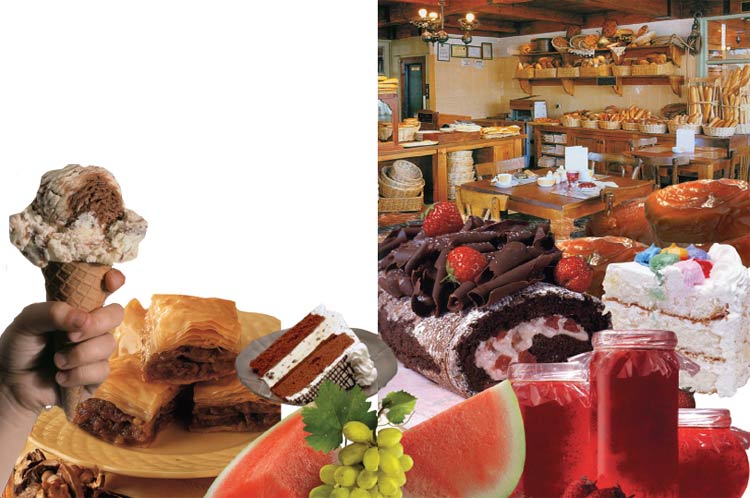 |
We take in carbohydrate from 70% of the food we eat. Partly digested carbohydrates in the mouth are sent to the intestines to be fully broken down. The glucose molecules that emerge as a result are kept in balance by means of enzymes. This glucose molecule, so vital to the body, is maintained in equilibrium with a specially created system. |
We take in carbohydrates from 70% of the food we eat. Carbohydrate digestion starts in the mouth, where the enzymes in saliva starts breaking them down. The digestion of these partially broken-down molecules ends in the intestines, and the glucose molecules that emerge as a result cause blood pressure to rise. However, blood pressure is balanced by means of the enzymes that act on the glucose molecules. In short, one molecule crucial for the body is kept in balance by another specially created molecule.
 | 1. Microvillus |
A. Sodium, amino acids and glu cose enter the cell through active trans port. B. Amino acids, glu cose and sodi um leave the cell and enter the blood ves sels. | |
Glucose, the cells' most impor tant nutri ent, is car - ried through the body via blood ves sels. Glucose can be trans port ed in this way due to its being sol u ble in water. This once again shows the sub lime nature of Allah's cre a tion. |
Even if glucose is present in excess quantities in the bloodstream, it is not wasted. By means of an enzyme known as glucokinase, excess glucose molecules are turned into a form known as glycogen and then stored. This enzyme is produced by the liver, and its production is controlled of a hormone known as insulin, secreted by the pancreas.43 The glycogen produced is ever ready for use when the body needs energy.
 |
Any change in the spe cif ic quan ti ties of glu - cose reach ing the brain can have fatal results. |
The body's metabolism operates much like a factory, with various units that engage in production, transport products to specific destinations, check them, identify surpluses and use them for other products. All production must be under strict supervision, so that no errors in production ever occur, and faulty products are broken down and used to form new products. In a factory, it's trained human beings who understand quality control, monitor the manufacturing, and perform all these processes. However, the system we are describing here occurs inside cells, mere microns in size (1 micron equals 1 x 10 -3 millimeters, or 4 x 10 -5 of an inch), inside your own body. Neither the molecules nor the cellular structures that act with them possess intelligence, knowledge, or training. Neither does any amount of time need to pass for all these processes. These perfect systems got underway in the exact way they do now, at the moment you were born. For thousands of years, before science was even aware of it, this perfect division of labor has been flawlessly implemented. Every molecule has discharged its responsibilities in every human who has ever lived. Moreover, this systematic division of labor and extraordinary organization operate in your body at every moment, without your awareness. Since molecules cannot possess intellect or consciousness, we once again witness a superior and flawless creation.
In the human body, glucose—the brain's most important source of fuel—must be present at a level of 60% in the blood (or 110 milligram/deciliter or 0.15 ounce/gallon); and at a level of 0.1 milligram/dl (1,3 x 10-4 ounce/gallon) in tissues. If something goes wrong and the amount of glucose reaching the brain drops below 0.04 milligram/dl (5.3 x 10-5 of an ounce/gallon), the brain cells become emit nerve impulses, causing the muscles to constantly contract. This leads to death within a short space of time.44 The way your life depends on such molecules is an important indication of how much human beings stand in need of Allah, and clearly reveals our helplessness and weakness in the face of His might. Even though we have difficulty fully comprehending the systems in our own bodies, we must still realize the definite existence of Allah and understand that everything is created for a reason. Every detail in the world makes this clear—all things are in perfect harmony and utterly flawless, as is set out in a verse:
It is Allah Who created the seven heavens and of the Earth the same number. The Command descending down through all of them, so that you might know that Allah has power over all things and that Allah encompasses all things in His knowledge. (Surat at-Talaq: 12)
 |
Glucose may take the form of different sugar molecules by bonding differently. One of these is fructose, the fruit sugar widely found in fruit and vegetables, and the molecule that gives fruit its sweet taste. Fructose is also the main sugar substance in honey, because the flowers from which bees gather nectar are all sources of fructose. This molecule also has another important property: It's the sugar that gives sperm cells the energy to move along their long and miraculous journey. 45
Another sugar molecule—sucrose, emerges when glucose and fructose combine together. Sucrose is the powdered sugar you use in daily life, and is particularly found in sugar cane and sugar beets. Sucrose also constitutes the structural element in starch and cellulose, found also in all plants. That Sucrose, an important product of photosynthesis, appears as a compound in leaves and is transmitted to all other regions of the plant. Due to its own molecular properties, sucrose is transmitted to the furthest roots and leaves without undergoing any structural changes. 46 Nourishment can thus easily reach any point in the plant.
The 20 amino acids are attached to one another by peptide bonds, and these bonds constitute the polypeptide chain. This bonding comes about in the living cell not through random inanimate coincidences, but by means of intervention via special enzymes and organelles. Keratin is a long amino acid chain, in other words protein. The polypeptide chains that constitute keratin are bound to one another by sulfur bridge. Sulfur bridges are found among amino acids containing sulfur atoms and these bonds take the form of tiny threads, which subsequently grow in size and give rise to the cell.
All these technical descriptions given above actually define a hair cell. A single hair on your head arises from an accumulation of these cells. In other words, a hair is nothing more than keratin molecules attached by sulfur bridges. Any change in your hair leads to these sulfur bonds breaking. For example, waving or straightening hair through various processes are actually changes these microscopic molecular bonds.
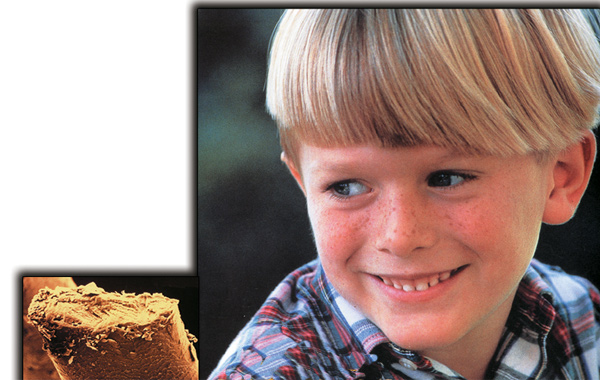 |
1. (Below) Image of hair molecule seen under a microscope |
Hair is flexible, because of the hydrogen bonds that give rise to keratin. Due to its elastic hydrogen bonds, hair bends and is not easily broken. But imagine the opposite! If keratin employed a different chemical bond, your hair would be very brittle and hard as wood. As a result of hydrogen bonds, such is never the case.
The bonds that give rise to hair molecules have another important feature. As hairs stretch, the sulfur bridges that keep the molecules together come to no harm. That is why however hair is combed or arranged, it can easily reassume its former shape. 47
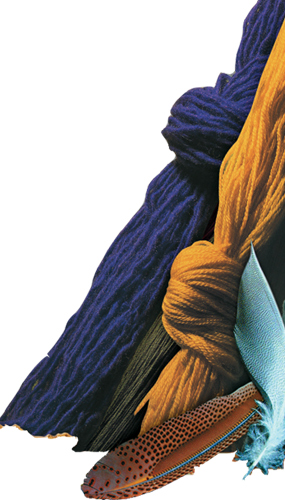 |
Lightening or bleaching the color of hair generally takes place by impairing the compounds that give hair its color, usually by solutions like hydrogen peroxide that permit the oxidization of the molecules. When hydrogen peroxide bleaches hair, a large number of sulfur bridges form, which is why the hair becomes more brittle and loses its elasticity.
The sheen in hair arises from its ability to reflect light. Some hair products and shampoos affect the hydrogen ions in the keratin molecules and change the distribution of their electrical charges. As a result, the keratin molecules and micro fibril nodes grip tighter to one another and improve their ability to reflect light. These small molecular changes give hair a brighter sheen. The way that hair becomes e more easily manageable after the use of hair creams is again the result of various changes at the molecular level. In hair creams, there are ionic substances that attach to keratin fibers and alter their electrical charges. This increases the mutually repellent force of hairs closely aligned with one another, making it harder for hairs to tangle around each other and break.
The keratin molecule appears in many forms in objects you use in daily life. Leather consists almost entirely of keratin molecules. Wool, silk, fish scale, fur and feathers also consist of keratin, as do claws and nails. Yet these structures are composed mainly of diagonal bonds with sulfur bridges. This diagonal bonding shows that keratin has been more wrought. The molecule that emerges is stronger and harder, which is why claws and nails are so hard. Unlike the keratin in other structures, the keratin molecules that constitute silk—the solidified form of a liquid secreted by many insects and spiders—are not in a spiral form. Instead, they form hard amino acid plaques piled atop one another. You can feel this flat, layered structure when you touch a piece of silk. Silk stretches less than wool does because the polypeptide chain forming it is already extended to almost its full extent. But it is still flexible because the plaques are bound to each other by hydrogen bonds. Because of these loose hydrogen bonds, the plaques can easily slide over one another.48
All these features reveal what a special molecule keratin is. Because of its many various features, keratin can be used in many ways and is the principal material in a great many substances. For example, skin and nails are very different from wool, yet all three consist of keratin and acquire their own particular characteristics because of keratin's specific feature. It is important for skin and hair to be elastic, yet nails must be hard. Silk needs a flat structure in order to be able to present a smooth appearance.
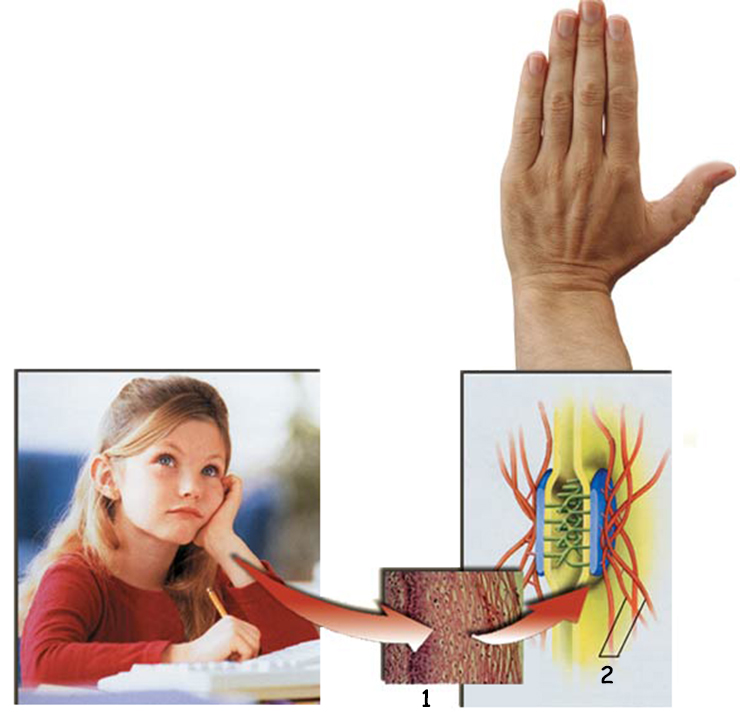 |
1. Keratin fibers |
Keratin is the substance that protects the skin and con stitutes the basis of the skin's porous structure. At the same time, it protects against exter nalagents. Keratin is just one of the countless blessings created to discharge their responsibilities in nature. |
What's noteworthy is that in all these substances, keratin serves as a protector. With its unique molecular structure, keratin protects the skin against external factors, and determines its structure in a particular manner. With its unique molecular structure keratin makes skin protected against external factors, and determines its structure in a particular manner. To give an example, the porous nature of skin is of vital importance to human beings' survival For example, were it not for this porous structure of the skin, it would be impossible for excess heat and water to leave the body, and a person would develop a fever and die. Keratin represents the basis of this porous structure. At the same time, it is by means of keratin that the skin, in constant contact with the external environment, is able to withstand various microorganisms. Similarly, the protection of the hair and nails depends on the functions of this special molecule. Although there are countless molecules in nature, there is no other molecule that can replace keratin, just one of the countless blessings created to perform their own special tasks.
Many substances, from the cellular fuel transported in the blood to the nectar produced by flowers, are the result of glucose molecules combining together. One of the most important functions of glucose lies in the cellulose structure that covers a large part of the Earth. Cellulose constitutes 50% of a tree's tissue and 90% of cotton. This molecule bears a close resemblance to starch; a basic food the body digests uses as energy for growth, movement and thinking.
Starch has a similar molecular structure to that of glucose. This molecule, found in large quantities in cereals and potatoes is food storage of developing plant embryo. Seeds therefore contain high levels of starch.
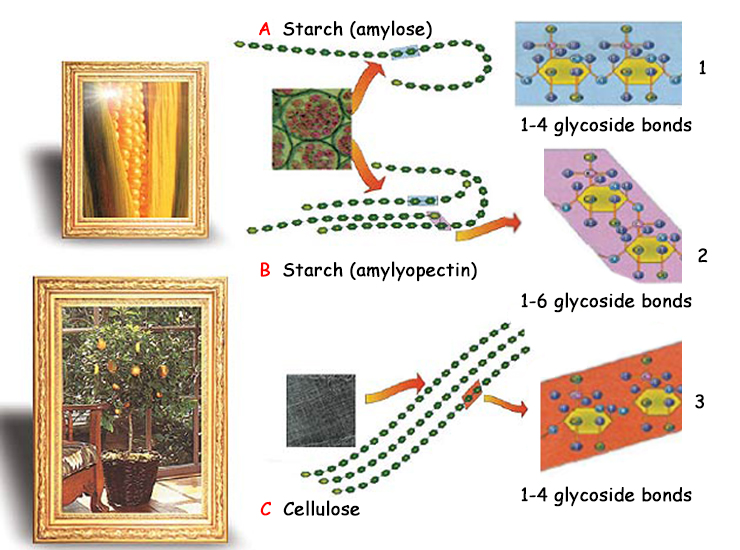 | |
A. Starch (amylose) | 1. 1-4 glycoside bonds |
Starch is fuel for metab o lism. Cellulose is a struc ture pecu liar to plants. The only thing that dis tin guish es the two is the dif fer ence in their molec u lar bonds. | |
Starch is a fuel for metabolism; cellulose is a special structural material for plants. The two molecules are identical; the only difference between the two is the difference in their molecular bonds. Cellulose molecules have long, straight, ribbon-like chains supported by hydrogen bonds among them. These flat ribbons are packaged together and the bonds between them fixed to form a hard solid mass. It is the curves in these bonds that cause starch and cellulose molecules, which are structurally the same, to exhibit completely different characteristics.49 The coming together of unconscious atoms flawlessly once again shows the superiority of the creation in the world. The special links between atoms offering a difference sufficiently wide as to give rise to two basic materials shows a delicate balance that cannot be accounted for in terms of chance. Allah has created this special structure, as He has all things in the universe.
 |
1. Cell wall |
Cellulose is the main building material in a plant's cell walls. As a result of the tightly packed cellulose groups holding their cells rigid, plants with stand even the harshest conditions. |
The properties of cellulose go further, however. Cellulose, the main structural material of the plant cell wall, is a hard substance, insoluble in water and is found particularly in the protective cell walls of plants and all the woody tissues of trees. Some plants inhabit possibly harmful environments. They are sometimes immersed in salt water or snowmelt or lake waters where mineral levels are increased. To protect themselves from these harsh environments, they need a very sound cell wall. For that reason, there are packaged cellulose groups in all plant cells.50
Despite being a polysaccharide, a sugar molecule like starch, cellulose cannot be digested by human beings. That is because the glucose units in cellulose are attached to one another with glycoside bonds. Mammals' digestive tracts have no enzyme able to break down this bond. That's why that cellulose is not a source of food for us. Cellulose can, however, be digested by ruminants, because in their digestive tracts, these animals host microorganisms that secrete cellulose enzymes. By means of these enzymes, ruminants can break down the cellulose they eat without difficulty and turn it into a form of food and energy. 51
 |
This is Allah's creation.Show me then what those besides.Him have created!The wrongdoers are clearly misguided. (Surah Luqman: 11) |
Termites also use cellulose for foodstuff, because in their digestive tracts a microorganism called trichonympha secretes an enzyme that breaks down cellulose. That is why termites generally prefer woody structures and use them as foodstuffs while burrowing into them. 52
No doubt that it would not be difficult for the tiny termite to find appropriate food. The reason it prefers a foodstuff incompatible with its metabolism is most important evidence for those eager to see the miracles created by Allah. This insect, less than 1 centimeter (0.04 of an inch) long, needs a microorganism in order to secure nourishment, which microorganism assumes its place in the termite's intestines as if instructed to do so. These microorganisms are ready to ensure digestion in all termites, and all termites make use of cellulose. As in all things, the law of Allah operates in the termite's obtaining its daily food. In this minute creature, Allah shows a flawless miracle of creation as a deterrent and a lesson. As He has revealed this in the Qur'an:
How many creatures do not carry their provision with them! Allah provides for them and He will for you. He is the All-Hearing, the All-Knowing. (Surat al-‘Ankabut: 60)
These mutually dependent systems in living things did not come into existence by chance. If a single random event were to take place, the entire order would become disorderly and the system will become non-functioning. For example, if once deprived of cellulose's protective effects, plant cells will be unable to withstand their external environment and will soon die. Alternatively, if cellulose lacked its special, folded molecular structure, then it would be an ordinary molecule easily soluble in water. These, of course, are only a few possibilities, since a single chance event in the formation of a molecule will inevitably change that molecule's properties. When coincidences enter the equation, it is difficult to speak of the possibility of a series of planned and conscious events taking place. In fact, however, atoms do combine in an exceedingly conscious and planned manner, according to duties specially given to them. This sublime planning and consciousness could never emerge accidentally, even if all possibilities were mobilized. All this is clear proof that Allah has created life. Refusing to accept this truth is a major loss for no one besides the individual concerned. Even if someone denies it, that does not alter the fact that Allah has created all things. In one verse, He imparts the tidings that even if people harbor their doubts, He pervades all things:
What! Are they in doubt about the meeting with their Lord? What! Does He not encompass all things? (Surah Fussilat: 54)
When a vase breaks when the broken parts approach one another, a molecular attraction forms. Under normal conditions, the two parts should adhere to each other as a result of this force stemming from the molecules drawing near one another, a force known as the "Van der Waals" force, which arises from the attraction of the opposite poles of atoms close to one another. This attractive force is rather weak, yet when the attractive forces among countless atoms are all added together, they give rise to a measurable adhesive force.
In view of this information, you might assume that when a vase's handle is broken off, it would be enough to squeeze the two fragments together again. Shouldn't the high attraction arising between the atoms be enough to bond the two fragments tightly together?
Generally, it shouldn't. You can never repair fragments merely by holding them together, because the distance between the separated molecules must not exceed a few angstroms. Only then can Van der Waals force have any effect. One angstrom is just 4 x 10-9 inch, and even on surfaces that you may assume to be very smooth, there are actually peaks measuring up to 400 angstroms (1.6 x 10-6 of an inch) high. Therefore, even if surfaces fit together perfectly, it will be impossible to secure a sufficient proximity among their molecules.
The secret of glue is that its adhesive molecules form a bond between the molecules on two surfaces and thus helps bind them together. Particularly in a liquid state, glue provides the necessary closeness for Van der Waals force to emerge. The force that emerges when this closeness is great by itself and the solidified glue prevents nobody the broken fragments from parting again.
 | |
A. (Left side) Adhesive material seen under the microscope | 1. Protein |
When a glass is broken,the adhe sive between the parts allows a bond to form between the main body and the broken piece. The two parts' sticking together is nothing but an increase in the molecular attraction between the two. | |
 |
The taste you perceive when you bite an apple is familiar. Even if we don't see the apple, you would know that you're eating one, because there are some 9,000 taste buds on your tongue—mutually compatible epithelial cells divided into groups of 50 or 100, which possess a small number of nerve endings. In that respect the sense of taste differs from the taste of smell, because in the sense of smell, the receptors are at the same time nerve endings.53 The taste-receptor cells, on the other hand, have different functions. One region of the tongue is responsible for perceiving sweetness, another part for detecting bitterness, and others for sourness and saltiness. Bitter can never be perceived in the sweet region, or sour in the bitter region.
The region at the front of the tongue that serves to perceive sweetness is composed of glucophores.54 There is protein in the glucophore structure. When any taste molecule from the outside reaches this region, it establishes a hydrogen bond with that protein molecule and sends a signal to the brain. In this way, you establish that what you are eating tastes sweet and is—in our example—an apple.
But how does the glucophore recognize the taste molecule? The glucophores can distinguish groups of atoms with specific geometrical arrangements. The front of the tongue perceives sweetness because molecules of an appropriate structure are able to bond there. We may compare the entire tongue to a sort of jigsaw puzzle. Pieces appropriately shaped to fill empty spaces settle onto predetermined areas. Depending on where they settle on the tongue, they set up sensations. Sweet molecules can never fill the empty spaces on the region determined for sourness, because their geometrical shapes cannot fit.
The way that receptors on the tongue possess special gaps pre-determined for them is a great creation. The property of the molecules that make sweets taste sweet, or bitter things taste bitter, has been specially set out, and the tongue's regions have been so created as to bond to these molecules. Planning and intelligence are necessary for all these things to have taken place.
 | ||
1. Tonsil | 4. Sour | 8. Windpipe |
There are some 9,000 taste buds on the tongue—mutu al ly com pat i ble epi the li al cells in dif fer ent groups of 50 or 1,000. That is why, when you bite into an apple, you imme di ate ly real ize it is an apple, even if you can not see it. | ||
It is surely no coincidence that a mechanism in the tongue should be able to perceive the flavors in foods. It is a great blessing created by Allah for human beings. The forms of molecules invisible to the naked eye give rise to different sensations and different tastes, and the tongue has been created in line with them. It is impossible for the tongue to have developed independently of the taste molecules outside in the environment. This linked creation clearly demonstrates that taste molecules and the tongue are not independent of each another, and that both are the work of the same Creator.
This represents another major impasse for the theory of evolution. There is no logical justification for structures so mutually compatible, in such great harmony with each other, to come into being by chance.
As you have seen, everything around us, including every atom in our own bodies, shows us the existence, infinite might and omniscience of Allah.
Based on this "jigsaw puzzle rule," various artificial sweeteners have been developed that are as compatible as taste molecules to the gaps in the tongue. The tongue's sweet-perception region is specially developed in order to bond with compatible molecules, so that a sensation of sweetness forms in the brain. This enables sweeteners to be made with low-calorie contents and which do not exhibit the properties of sugar.55 This emphasizes the fact that whatever taste we receive is merely a perception. That the brain perceives the substance as sweet even though it contains no sugar is clear evidence of a sensory system inside the brain, independent of outside matter. There is in fact no sugar in sweeteners, but we imagine that there is. That being so, how can we ever be sure whether sugar actually exists? Since we ever have direct dealings with our perceptions only, we can never be certain.
Taste Cells | |
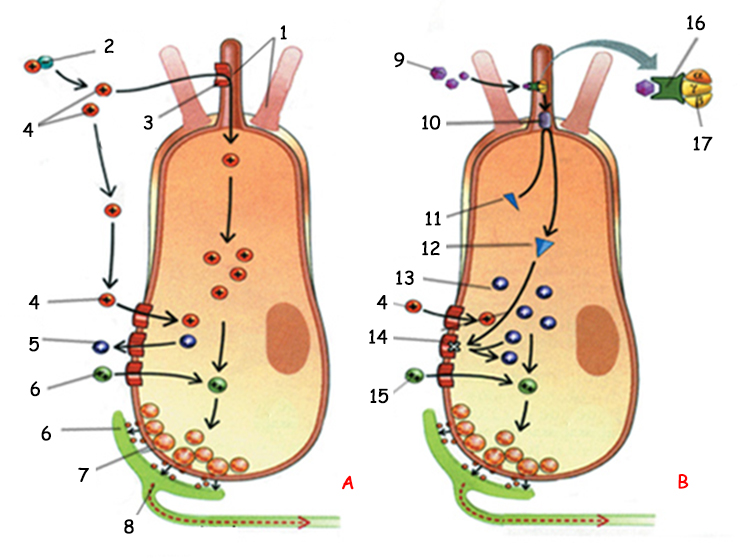 | |
A-Salty stimulus | B-Sweet stimulus |
1. Microvillus | 9. Sugar or sweetener |
Taste receptor cells grouped amongst them selves have different functions.One part of the tongue has the task of perceiving sweetness; and other regions perceive bitter, sour or salty tastes. Sweet and salty molecules always attach to the receptors fitted to receive them. | |
Beyond all these molecules, shapes and chemical bonds, what perceptions reach the brain are merely electrical signals. The brain perceives certain signals as sweet, but the criteria by which it distinguishes this signal is unclear. Electrical signals from the tongue progress reach the brain along nerves consisting of fat, water and protein, as is true of all our senses. Therefore, is a banana or a piece of chocolate really sweet? Can you be sure? You cannot be certain. Everything in the outside world reaches our brains in the form of electrical signals, so we can never have direct contact with the originals existing "out" in that world. Therefore, the candy you eat tastes sweet because your brain perceives the electrical signals reaching it as sweet. Yet in fact, you have absolutely no evidence whether it really is.
 |
Any blessing you have is from Allah.Then when harm touches you, it is to Him you cry for help.(Surah an-Nahl: 53) |
When you smell a rose, similarly, what reaches you are actually scent molecules belonging to that flower. The scent-perception system in the nose resembles that in the tongue. Molecules settle into gaps specially set out for them, establish chemical bonds with the proteins there, and signals are forwarded to the brain to give rise to the perception of smell.
We perceive various scents on a sensitive membrane in the nose known as the nasal epithelium, which contains some 50 million nerve cells. And each nerve cell contains several proteins that possess various geometrical forms that are compatible with scent molecules. A scent molecule of appropriate form can attach to one of the protein molecules there. Polarization thus takes place, giving rise to electrical signals that reach the scent-perception zone located just beneath the forehead.56
Here, the information arriving from different cells is analyzed and forwarded to various cerebral structures, where the nature and origin of the smell are determined. In order for a signal to start to go to the brain, it is enough for just part of the molecule to fit its predetermined area. This, as you have already seen with regard to taste perception, is a kind of lock-and-key system. For perception to take place, the two shapes have to be completely compatible. The key must fit the lock, for the two molecules to clamp together. If a molecule is flexible, it may fit more than one region, and a confused situation arises in which odors may resemble one another. Or from a single aroma, we may form an image in our minds of more than one object. The scent of a flower reaches our nose, but we may also think it resembles a perfume or a fruit.
In order for a scent to be perceived, its molecules must be both airborne—in order to reach the nasal epithelium—and soluble in water. Being soluble, they can dissolve in the mucus released by cells in the nasal epithelium. If the molecule does not dissolve in the mucus, however, then organic molecules in the mucus flush the insoluble molecules to other specially charged regions, where the molecules may combine with a relevant protein.57 In this way, perception of the same scent arises. This special precaution takes into account the possibility that scent molecules may not be water-soluble. Either way, the brain perceives the arriving scent molecules.
Smells differ from one another according to the protein structures to which these scent molecules bond. When you smell a rose, you are unaware that molecules and proteins in your nose are compatible with one another and are engaged in chemical activity. Yet the scent that reaches you from the rose always forms bonds with the same type of proteins, which is why you immediately recognize a rose's smell, even if you cannot see or touch it. Scents from a rose never bond to a different protein in your nose to awaken the memory of a strawberry. You can never make such an error, because this molecular structure operates flawlessly. By means of the impeccable system here, you can detect not just the difference between two smells, but to distinguish between the countless scent molecules on Earth, whether they are familiar to you or not.
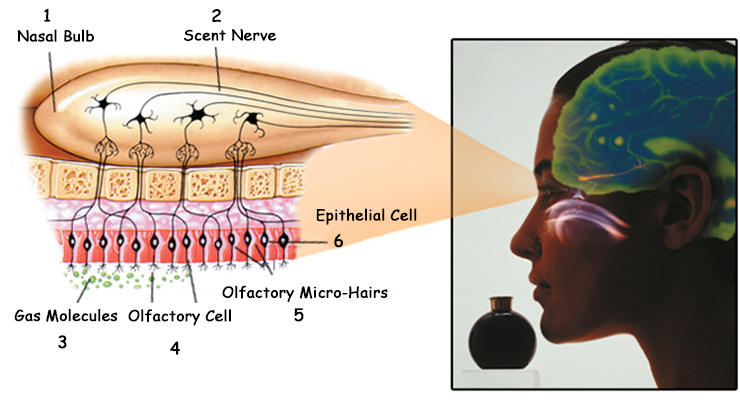 | |
1. Nasal Bulb | 4. Olfactory Cell |
There are some 50 million nerve cells on the nasal membrane. These cells possess various geometrical shapes to be compatible with scent molecules. The scent molecules can attach to the protein suited to their own shape and initiate polarization.This produces an electrical current, and these signals are sent to various cerebral structures, where the nature and identity of the smell is determined. | |
Molecules in your eyes again perceive molecules. Molecules are responsible for the color we perceive in objects, and at the same time, molecules in our eyes react to the light entering from outside.
Many natural colors form as a result of special molecules that give rise to them. Trees in the street and the flowers in gardens owe their colors to these molecules. These molecules are also responsible for the color of your skin, hair and eyes.
Before we examine the molecules that give rise to—and respond to—colors, recall the kind of activity involved in seeing. The retina contains two types of receptor cell: rods and cones. The 1 billion or so rod cells perceive darker shades of light, but do not distinguish colors. The 3 billion or more cone cells perceive bright light and do distinguish colors. Every receptor cell contains light-sensitive molecules, and their reactions to light determine the message sent to the brain.
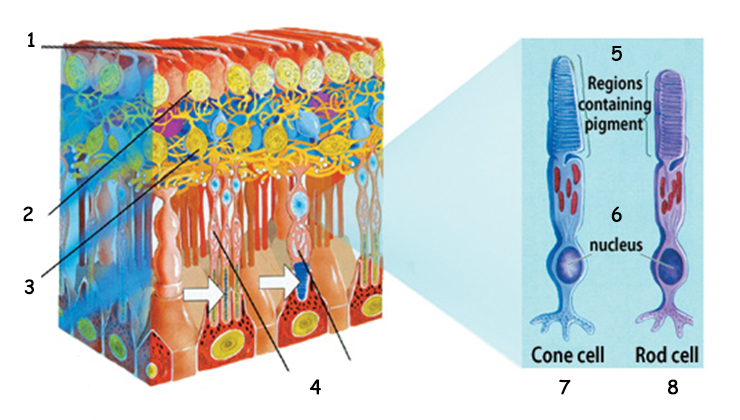 |
1. Nerve Fibers transporting visual data 4. Rod and cone cells. (The white arrows indicate the light-sensitive areas of the rod and cone cells.) 5. Regions containing pigment |
The retinal molecule that permits the vision processis a hydro carbon group, bonded in a special way. The bond is inflexible, and the electrons in the chain are loosely attached to one another. Able to move with ease, these electrons can absorb energy from the light falling onto the molecule. |
The retina's molecules that make sight possible are hydrocarbon groups, bonded in a special way. The bonds that give rise to these molecules are inflexible, making the chain rather strong. The second important feature of these bonds is that the chain's electrons are loosely bound to one another, so that these electrons can easily move to new regions. Due to that easy movement, the molecules can easily absorb energy from any light falling on them, and can conserve this energy for their own electrons to enter a new arrangement. 58
By way of this property, a retinal molecule can perceive all forms of light falling on it. This system permits us to see all the details around us. Allah has made the miraculous system in our eyes depend on electrons that are able to easily store energy in order to be able to move. These complex systems came into being merely through Allah telling them to "Be!" As He has revealed this in the Qur'an:
It is He Who created the heavens and the Earth with Truth. The day He says "Be!" it is. His speech is Truth. The Kingdom will be His on the Day the Trumpet is blown, the Knower of the Unseen and the Visible. He is the All-Wise, the All-Aware. (Surat al-An‘am: 73)
 |
 |
That is Allah, your Lord.There is no god but Him the creater of everything.So worship Him.He is responsible for everything. (Surat al-An‘am: 102) |
Photosynthesis is a chemical process carried out by green plants and certain single-celled organisms that use sunbeams as a source of energy, combine carbon dioxide and hydrogen, and thus produce foodstuffs and as a byproduct, free oxygen. The end result of photosynthesis performed by these organisms is that we can absorb that stored solar energy into our bodies. In the absence of a process like photosynthesis, life would be impossible.
The only reason that certain organisms can carry out photosynthesis is that they possess a chlorophyll molecule. With it, any living thing will need nothing more than its own resources to obtain food and survive. It can take energy to create food directly from the Sun. However, the existence of that chlorophyll molecule and the performance of these processes are not easy. Despite our knowledge of the chlorophyll molecule's structure and our 21st-century technology, photosynthesis has still not been replicated artificially. In order for this molecule to be able to operate in a plant and fulfill its duty, hundreds of enzymes must come into play.
The processes carried out during photosynthesis are exceedingly complicated. As chlorophyll converts light from the Sun into chemical energy, a process known as the electron transfer system begins. Water molecules are broken down, and hydrogen and oxygen atoms will be released. That's how plants establish the oxygen balance in the world. If this molecule and the enzymes that set it in motion did not exist, then there would not be a single trace of life on Earth.
The structure containing chlorophyll molecules is the chloroplast, in which there are small, round structures known as grana. Chlorophyll molecules are present inside the grana, and some of the stages of photosynthesis take place in this region. When exposed to sunlight, the chloroplast becomes active and constantly moves through the leaf cell, to be able to obtain maximum productivity from sunlight. The pigment in the chloroplast is green, which is why living things capable of photosynthesis are green. The color green is able to absorb both violet and red light, since the wavelengths that comprise these colors are the source of energy for the photosynthesis process.
The scope of the process these tiny molecules perform is exceedingly large. Plants use an estimated 280 billion tons of water and 680 billion tons of CO2 . The amount of oxygen they release into the atmosphere is 500 billion tons.59 These figures underscore the importance of this process carried out by this miraculous molecule, installed with a flawless arrangement, in every green plant in the world. Hundreds of enzymes have been given duties so that these molecules can go into action. Photosynthesis is a proof of creation that is sufficient to stymie evolutionists, who seek to account for the origin of living things in terms of chance.
 | |
A. SUN LIGHT | 1. Cell wall |
Chloroplasts work like factories in the leaf cells of green plants. A string of photosynthetic reactions produceoxygen and glucose from water and carbondioxide. Every chloroplast contains special packages known asgrana (below). These turn solar energy into chemical energy and contain proteins that employ light sensitive electrons and the requisite enzymes. Six water molecules and six carbondioxide molecules are neces sary to form one glucose molecule. In this process, six oxygen atoms are given off. | |
 |
If you ask them "Who sends down water from the sky, bringing the Earthback to life again after it was dead?" they will say, "Allah." Say: "Pradise be to Allah." But most of them do not use their intellect. Surat al-'Ankabut: 63 |
The color orange is provided by the carotene molecule. The bonds that give rise to carotene are the same as those that give rise to the retinal molecule, and because of these bonds, both the carotene and retinal molecules are solid and inflexible. Secondly, even if these molecules' loosely bound electrons encounter low-energy light, they are immediately ready to go into action and absorb those photons into their own structures.
Carotene absorbs indigo light, for which reason it reflects orange light. This is the special molecule that gives carrots their color. The light-cream color of milk and the yellow of butter also stem from the presence of carotene molecules. Meat fats also take their light-yellow hue from the carotene molecules that animals consume. And because of their hydrocarbon structure, these carotene molecules can dissolve in fat. In photosynthetic organisms like algae and plants, carotene emerges together with chlorophyll. The carotene collects a certain spectrum of the solar rays that chlorophyll cannot absorb. A leaf generally contains three chlorophyll molecules for every carotene molecule. The darker green a leaf, the greater its concentration of carotene. The yellowish-orange color of carotene is suppressed by chlorophyll until autumn. When autumn comes and the chlorophyll molecules are weakened, the carotene molecules make their appearance.60 That is why leaves turn yellow in autumn and there is such an impressive change in trees' colors.
No other molecule in the world possesses the same features as carotene and chlorophyll, which give life to Earth and provide such beautiful seasonal variety. No similar molecules are available, not even by artificial means. Like everything else in the universe, these are blessings from Allah. Contrary to what evolutionists would have you believe, it is impossible for random coincidences to give rise to anything resembling these tiny molecules. Man is absolutely dependent on Allah for all he does. To understand this, all you need is to realize that the absence of a single molecule might lead to the end of human life on Earth. Nearly every one of the molecules cited in this book is a clear example of this.
 |
Melanin molecules are held together by the bonds that form the carotene molecules. By means of these bonds, melanin is able to absorb all the wavelengths of light that strike it, which is why an object containing melanin appears dark. Melanin molecules bond to protein molecules and accumulate in granules whose colors vary from yellow to brown, and even black. These granules impart their colors to our skin and hair, which may be brown or black, depending on how the molecules accumulate in the granules.
Melanin is also a component of the chameleon's color-changing mechanism: The molecule is carried by channels inside the skin, where it covers up brighter pigments in the lower layers. Animals like the octopus, which can swiftly darken its colors, also make use of this molecule, and in the same manner. Color changes take place in their bodies as a result of the spreading of melanin granules. When the melanin granules cluster together once more, the color of the skin lightens.
When fruit goes rotten, melanin of different kinds also forms. The decaying fruit's cell walls become damaged, and these membranes cause an enzyme called phenoloxidase to go into action within the cell. This enzyme is not found in lemons, melons or tomatoes. However, the browning that accompanies decay in fruit such as peaches is the result of melanin molecules. Melanin is also the molecule responsible for the dark color of tea. 61
Do not assume, on the basis of the information provided above, that the melanin molecule alone is responsible for producing colors. It not only imparts color, but also protects against ultraviolet rays and visible light. By way of melanin, your skin is protected against harmful and solar rays. Were it not for this pigment, your skin would soon redden and blister from the ultraviolet rays and cause permanent damage. Indeed, certain diseases resulting from lack of the melanin—such as albinism—cause the skin, hair, eyelashes and eyebrows to lose their pigmentation. The skin becomes exceptionally sensitive to ultraviolet light. Deprived of the special protective effects of melanin, sufferers may soon develop skin cancer.
Melanin's protection also continues in the eye, one of our most sensitive and valuable organs. Melanin is the source of color in the iris, and by means of its light-absorbent qualities, it protects the lens against ultraviolet rays and reduces the risk of cataracts. Under normal conditions, the eye would be the organ most damaged by ultraviolet rays. But by means of melanin, we are never exposed to such a risk. Melanin provides extra protection by filtering different colors incompatible with the retinal receptors and which might damage the retina. In this way, your sight is never affected by the light outside, and is never harmed. Melanin raises the quality of your vision by reducing the admission of blue light and dazzling rays. However, since blue light is not eliminated entirely, the color balance is maintained. 62
 |
As well as giving your skin its color, melanin also protects you against ultraviolet rays and visible light. If this special protection that Allah has created is missing, skin cancer can soon result. |
In conclusion, many factors affecting vision, from the protection of the eye to color quality, depend on the activities of the melanin molecule. The way that this molecule seemingly knows just how to protect the eye and the skin is the work of Allah's immaculate creation. Above all else, the molecule must first know that the eye is an organ used for perceiving light and must estimate the retina's sensitivity to. Then it must become aware of its own protective nature and locate itself where it may protect this sensitive organ. Of course, this all requires consciousness. People who understand the Source of this consciousness will realize that nothing exists of its own accord. Melanin's being present at the right location in the eye and at just the proper quantity definitely shows the existence of a purposeful creation. Everything that has been created is too flawless to leave room for the slightest doubt. It is easy to see this immaculate creation at every point of the universe. Yet it takes reason to understand this and direct thankful appreciation to the Lord. Believers who view the magnificent creation around them and give thanks to Allah are described in these terms in the Qur'an:
In the creation of the heavens and the Earth, and the alternation of night and day, there are Signs for people with intelligence: Those who remember Allah, standing, sitting and lying on their sides, and reflect on the creation of the heavens and the Earth: "Our Lord, You have not created this for nothing. Glory be to You! So safeguard us from the punishment of the Fire." (Surah Al ‘Imran: 190-191)
We have introduced all these color-generating molecules and their properties to show that the lively colors you see around you at every moment are nothing but the movement of electrons. Pigments' colors form as a result of the bonding of several of nature's 109 atoms in different ways, and thus come to constitute pigments that absorb and reflect discrete wavelengths of light. To establish this variety, Allah has made not just the atoms responsible, but also the various ways in which they are assembled and attached.
Everything that exists is composed of the same identical particles—protons, neutrons, and electrons. Yet the world that emerges as a result is truly dazzling, a work of art brought about by the will of Allah. Everything that is miraculous and matchless displays the power of our Almighty Lord, Who doubtless has the power to create similar and even greater things than these.
Evolutionists seek to account for His magnificent creation in terms of chance, and so fall into the error of denying His existence. In fact, however, Allah's Presence is everywhere. Everything, from the tiniest speck of dust, is a part of His artistry in all its detail. Molecules included everything from the smallest to the largest in the heavens and Earth, constantly and clearly declares the greatness of our Lord, Who sets out the truth of this in His verses:
He is Allah—there is no god but Him. He is the Knower of the Unseen and the Visible. He is the All-Merciful, the Most Merciful. He is Allah—there is no god but Him. He is the King, the Most Pure, the Perfect Peace, the Trustworthy, the Safeguarder, the Almighty, the Compeller, the Supremely Great. Glory be to Allah above all they associate with Him. He is Allah—the Creator, the Maker, the Giver of Form. To Him belong the Most Beautiful Names. Everything in the heavens and Earth glorifies Him. He is the Almighty, the All-Wise. (Surat al-Hashr: 22-24)
13. P. W. Atkins, Molecules, p. 23.
14. Biological Science, A Molecular Approach, BSCS Blue Version, Sixth Edition, p. 70. http://acept.la.asu.edu/courses/phs110/ds4/chapter4.html; Hoimar Von Ditfurth, Children of the Universe - the tale of our existence (tr; Dinozorların Sessiz Gecesi Book 5), Alan Publishing, 1996, pp. 106107.
15. P. W. Atkins, Molecules, pp. 23-24.
16. Bilim ve Teknik Magazine (Science and Technology), September 96, No. 346, p. 47.
18. Bilim ve Teknik Magazine (Science and Technology), September 96, No. 346, p. 47.
19. http://arthurdent.blogcu.com/1504237/
20. P. W. Atkins, Molecules, p. 24.
22. http://www.icr.org/pubs/imp/ imp-324.htm
23. http://www.webelements.com/webelements/elements/text/C/key.html
24. http://en.wikipedia.org/wiki/DNA
25. http://www.genetikbilimi.com /genbilim/dnanedir.html – Ahmet F. Yüksel and Barış Yelkenci, London, 28 February, 2000.
26. Mutahhar Yenson, Human Biochemistry, 5th edition, Beta Press Publish and Distribution, pp. 9-10.
27. Biological Science, A Molecular Approach, 1990, Canada, BSCS Blue Version, p. 29.
29. http://mywebpages.comcast.net/biologycentury/pages/chemical4.html
30. http://biyolojidunyasi.8m.net/genel.htm
31. Prof. Dr. Engin M. Gözükara, Biyokimya (Biochemistry), Vol. 1, 3rd edition, 1997, Nobel Medical Publishing, pp. 161-173.
32. http://biyolojidunyasi.8m.net/genel.htm
33. Prof. Dr. Engin M. Gözükara, Biyokimya, (Biochemistry), Vol. 1, 3rd edition, p. 20.
34. http://yolgezer.fisek.com.tr/renkler/evrim.html; Cemal Yıldırım, Evrim Kuramı ve Bağnazlık (Evolution Theory and Bigotry), Ankara 1998.
35. Prof. Dr. Ali Demirsoy, Basic Rules of Life, General Biology/General Zoology, Vol. 1, Part 1, 5th edition, p. 569.
36. http://www.pathlights.com/ce_encyclopedia/Encyclopedia/08dna03.htm
37. http://biyolojidunyasi.8m.net/ genel.htm
38. Prof. Dr. Engin M. Gözükara, Bioikimya (Biochemistry), p. 49
41. http://www.surefaithministries.com/cell.html
42. P. W. Atkins, Molecules, p. 96
43. http://biyolojidunyasi.8m.net/biyokim1.htm
44. http://esmaalbayrak.sevgi. k12.tr/karbonhidratlar.htm
45. P. W. Atkins, Molecules, p. 97.
46. Prof. Dr. Engin M. Gözükara, Biokimya (Biochemistry), p. 219.
47. P. W. Atkins, Molecules, p. 91.
50. Prof. Dr. Engin M. Gözükara, Biokimya (Biochemistry), p. 232.
53. P. W. Atkins, Molecules, p. 106.
55. http://www.newton.dep.anl.gov/askasci/bio99/bio99222.htm
56. http://www.newton.dep.anl.gov/newton/askasci/1993/biology/bio045.htm
57. P. W. Atkins, Molecules, p. 124.
59. http://biyolojidunyasi.8m.net/bitki.htm
60. P. W. Atkins, Molecules, p. 151.
62. http://www.macular.org/bluelite.html; http://www.mdsupport.org/library/blulight.html